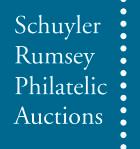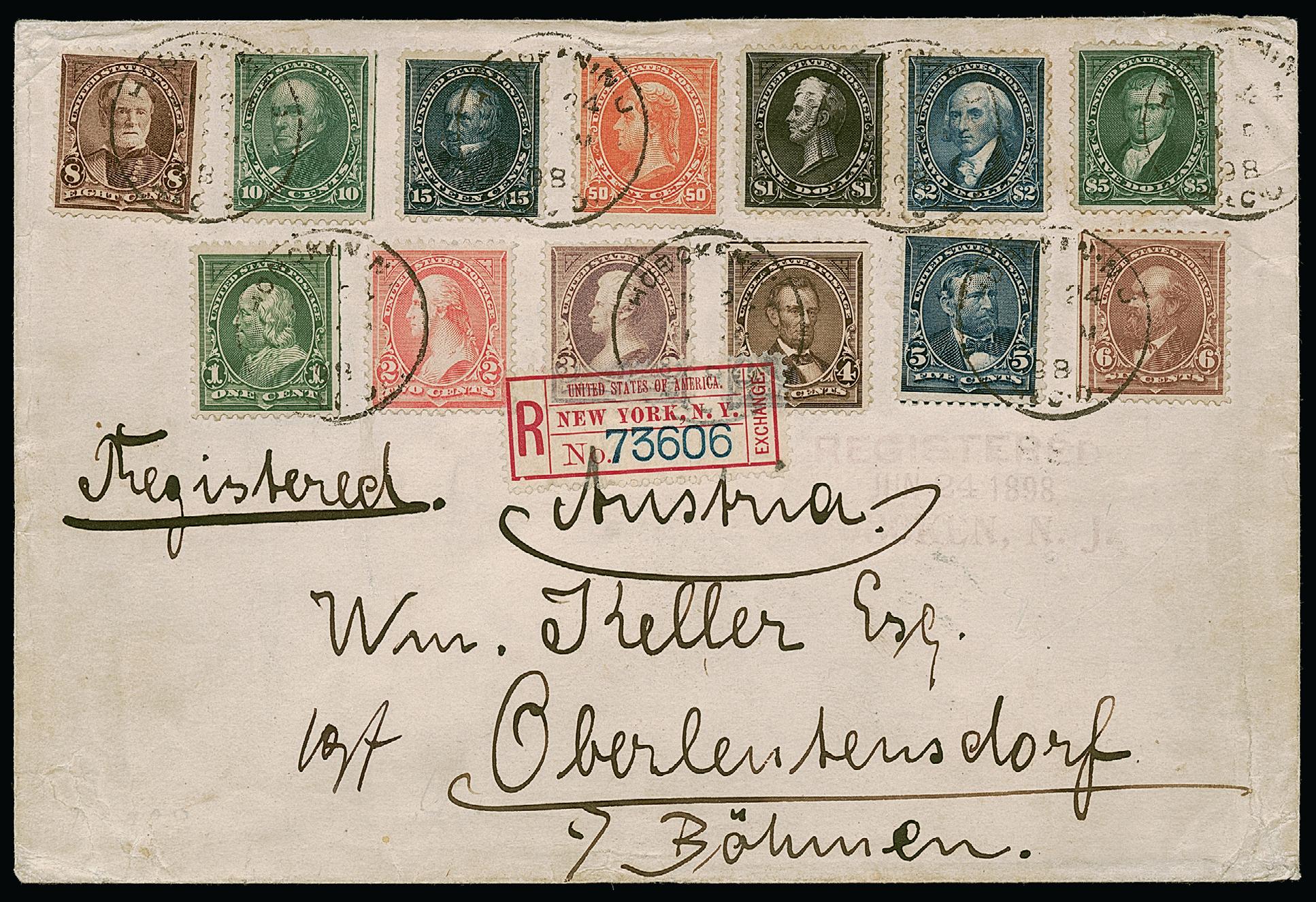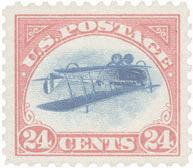CollectorsClub Philatelist




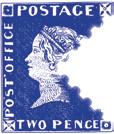






Spring Auction Series – May 26-June 1, 2025



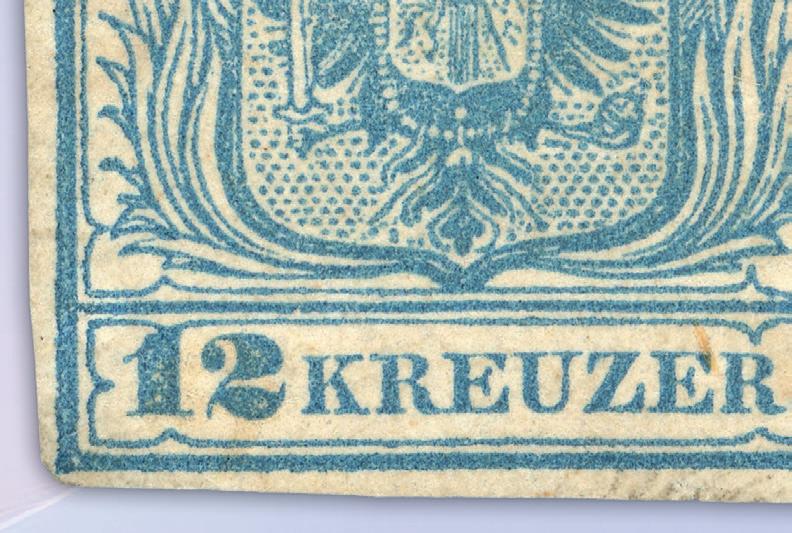
Austria 1850 12kr unissued
ONE OF THE GREATEST AUSTRIAN RARITIES




From the Karl Korn collection of unused stamps and proofs from 1850-1946 Sold for CHF 123’000 (incl. buyer’s premium)

David Feldman International Auctioneers

www.davidfeldman.com
Our latest auction achieved remarkable results thanks to the freshness and rarity of the material offered. Each philatelic item tells a unique story, connecting collectors to moments in history and deepening their passion for the art of stamp collecting.


Let us share those stories! Consign with us for our Autumn Auction Series, November 2025.


Editor: Wayne L. Youngblood wystamps@gmail.com
Layout and Design:
Jason E. Youngblood jyoungblood@gmail.com
Publications Committee:
John Barwis, RDP
Robert Gray
James Grimwood-Taylor, RDP
Matthew Healey
Daniel M. Knowles, MD
Robert P. Odenweller, RDP (member emeritus)
Advertising Manager: Robert Gray robertgray@me.com
Book Review Editor: Dr. Luca Lavagnino, Europe
Editorial Correspondence: wystamps@gmail.com
Business Correspondence: 58 W 40th St, Second Floor, New York NY 10018
Tel. (212) 683-0559 email: info@collectorsclub.org
Website: www.collectorsclub.org
Executive Secretary and Librarian: Andrea Matura collectorsclub@collectorsclub.org
Authors’ guidelines for the CCP are available from the editor.
July-August 2025
Volume 104, Number 4
Essential Elements: Eye of the Beholder
Richard A. Coffey
Boston 2026 World Expo Changes Its FIP Status
Yamil H. Kouri Jr
Th e Development of the Congo Free State Postal System 1885-1908
William N. Kelly
1942 Bogus Belgian Congo Airmail Surcharges in U.S. Currency
James R. Taylor
Moving Up in the Philatelic World (am I a Specialist Yet?)
Steve Bonowski.
The Tragic Flight of an Amusing Cover Michael L. Wilson
Library Update
Robert Gray Library Chair
Departments
President’s Message.
Editor’s Notepad
2025 Collectors Club Programs.
The Collectors Club Philatelist (ISSN 0010-0838) is published bimonthly in January, March, May, July, September and November by The Collectors Club, 58 W 40th St. Mezzanine, NEW YORK NY 10018. A subscription to The Collectors Club Philatelist is included with dues paid by members of The Collectors Club. Subscription price for nonmembers in the United States is $70. Prices for foreign addresses and/or other classes of mail are higher depending on actual cost; consult publisher. Subscriptions for outside the United States should be paid in U.S. funds drawn on a U.S. bank. Back issues $9, including postage. For a complete list, write the publisher. Claims for undelivered issues will be honored only within six months of the date of publication. Beyond that, replacements will be provided at the single copy price. Periodicals class postage paid at New York, New York 10001 and additional offices. Office of Publication: The Collectors Club, 58 W 40th St. Second Floor, NEW YORK NY 10018 Copyright 2025 by The Collectors Club. All rights reserved. We do not give implied or other consent for copying for more than personal use. Indexed in PhiLindx by E.E. Fricks and included in the article index of the American Philatelic Research Library and the Global Philatelic Library. The opinions and statements contained in the articles are those of the authors and not necessarily those of The Collectors Club, its officers or staff
POSTMASTER: Send change of address to: The Collectors Club Philatelist, 58 W 40th St. Second Floor, NEW YORK NY 10018
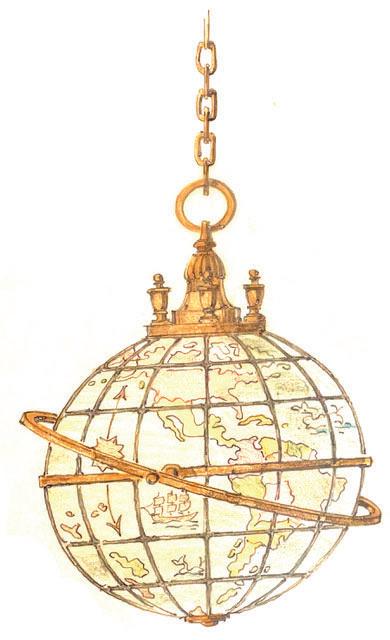
58 W 40th ST, MEZZANINE, NEW YORK NY 10018 (212) 683-0559
The Collectors Club is open Monday through Friday, 10 a.m. to 5 p.m. Please call ahead if intending to visit.
Officers
President Lawrence Haber
Vice President
Robert Gray
Secretary Matthew Healey
Treasurer Roger S. Brody, RDP
Chief Technology Officer Joan Harmer
Governors
Class of 2025
Robert Gray
Lawrence Haber
Matthew Healey
Daniel J. Ryterband
Wade E. Saadi, RDP
Class of 2026
Roger S. Brody, RDP
Vincent Cosenza
Joan Harmer
Kathryn Johnson Behruz Nassre
Class of 2027
Mark E. Banchik
Alan R. Barasch
Stephen Reinhard
Robert G. Rose
The Collectors Club Philatelist is an international specialty journal serving the needs of hundreds of collectors worldwide. It serves as the journal of record for the Collectors Club as well as publishing stimulating and helpful articles for collectors of many levels and specialties. The Collectors Club Philatelist strives to publish accurate philatelic information and serves as a forum for communication among members of the Collectors Club.
Lawrence Haber
As we turn the page to the July-August issue, we also transition into another season. One might view summer as the antithesis of the “high season” for our hobby. With the warm and inviting weather, why stay cooped up in the stamp room? However, that doesn’t mean the pace slows or that philately takes a holiday. Quite the opposite –summer presents us with wonderful opportunities to engage, explore and connect. In August, the Great American Stamp Show (GASS) will gather collectors from across the country. Other regional and local events also fill the calendar. Rather than a downtime, summer becomes a chance to enhance our enjoyment of the hobby we share.


At a moment when so much of life seems to be moving faster, becoming more fragmented and digitized, stamp collecting stands apart. It is quiet and personal – yet far from isolated. It connects us profoundly with the world: historically, geographically and culturally. A single miniature work of art, affixed to an envelope and sent on a journey, can unlock a narrative, reveal a story or evoke a time and place we might never have encountered. That is the singular magic of philately. Whether your interests lie in classic United States issues, worldwide airmails, revenues, postal history or modern thematics, this hobby always meets you wherever your curiosity happens to lead.
The past quarter has been a dynamic one for the Club. Our programming continues to thrive. Thanks to the dedication of our program committee and the support of our membership, we’ve seen strong attendance both in person and online via Zoom. The hybrid format has allowed us to maintain our traditional Wednesday meetings at our Clubhouse while extending our reach to members who join us from across the country and around the world.
We’ve enjoyed a rich mix of presentations. This spring, we were treated to a delightful talk from the Mouristens on a little-known aspect of Danish philately. We took a retrospective look at the past five years of our virtual programming – an impressive record that speaks to how quickly and successfully we adapted
to new formats. Continuing our theme of observing the upcoming 250th anniversary of American independence, we heard two excellent programs with an early American focus: one from Roger Brody and another from Bernard Biales, both of whom explored themes from the colonial period and the early years of the republic.
Our scope, of course, is global. That came through clearly in two superb programs: Ed Kroft gave us a fascinating survey of philatelic gems from the Holy Land, while Jere Dutt examined a beautiful and rare issue from the French colony of Dahomey. We rounded out the first half of the year with a presentation by Matt Kewriga on the postal history of the Danish West Indies. Each of these talks reflected not only deep knowledge, but also passion – a reminder of how much we can all learn from one another.
If you missed any of these programs, don’t worry – they are available in our video archive, which has become a genuine treasure trove. I encourage you to visit the archive and revisit (or discover for the fi rst time) some of these engaging talks. They are well worth your time and o ff er something for every level of collector.
Another area where we continue to place emphasis is philatelic exhibiting. Exhibiting is more than showing off a collection – it’s an act of storytelling. It transforms personal holdings into public history. It invites dialogue, interpretation and reflection. And, perhaps most importantly, it is accessible to anyone, regardless of experience level. If you’ve never exhibited before, I would encourage you to give it a try.
Our annual Single-Frame Competition is coming up in early November, and it’s the ideal venue to get your feet wet. Whether you’re new to exhibiting or looking to try something di ff erent, this friendly and supportive event is designed to encourage participation and learning. It’s a safe and welcoming environment for fi rst-time exhibitors – and a rewarding one for seasoned veterans as well.
As we head into the second half of the year, I want to thank you for being part of this vibrant community. The Collectors Club remains a place of shared curiosity, learning and enthusiasm. Whether you join us from New York or from afar, I hope you’ll continue to find inspiration, enjoyment and camaraderie in our programs, our exhibits, our journal and – above all – in our shared love of philately.
All Collectors Club presentations are currently held online, via ZOOM, beginning at 5:30 p.m. (Eastern). Although there is no cost, pre-registration is necessary.
Wayne L. Youngblood
[Editor’s note: As you may recall, in his regular column for the May-June issue of the Collectors Club Philatelist, President Larry Haber informed members that the Collectors Club has a page on the powerful online publishing platform Substack (https://collectorsclub.substack.com/). That page continues to grow with interesting content not found in these pages; I’m confident you’ll find much of interest there. Please spend some time perusing what all is available. The following feature appeared recently on my own Substack site (wayneyoungblood.substack.com) and appears in these pages by request. I hope you’ll take a moment and check out some of the interesting features that are available on my site as well.]
“The chick’s in the mail” is no longer a valid excuse ...
For more than 130 years (since 1892), millions of people have been treated to the cheerful sound of a chorus of chirping chicks when entering their post offices during the spring. And, with rare exceptions, the U.S. Post Office Department (until 1971) and the U.S. Postal Service (since 1971) have done a phenomenal job of successfully delivering this precious cargo all over the country. Until this spring.
On April 29, 2025, the Freedom Ranger Hatchery in Reinholds, Pa., shipped more than 12,000 live chicks in multiple parcels to customers all over the country in a routine weekly mailing. Somehow, the chicks’ journey stalled when the entire shipment ended up in a truck at the USPS Delaware Processing and Distribution Center, about 70 miles southeast of the hatchery. Although the vast majority of the tiny birds were chickens, there were also baby turkeys, geese, quail and chukar partridges.
On May 2, the Delaware Department of Agriculture (DDA), received a call from the USPS Delaware Processing and Distribution Center that it had “a box” of “undeliverable” live chicks that had been located in a mail truck. The vehicle had been sitting unused for a couple of days and the chicks were without food, water or temperature control. A follow-up call revealed there were “many boxes.” DDA immediately facilitated the transfer of the orphaned chicks to the First State Animal Center in Camden, Del. (about 50 miles south of the USPS facility). Upon arrival, it was discovered there were multiple shipments of chicks with about 100 invoices representing shipping destinations all over the United States, including Florida and the West Coast.
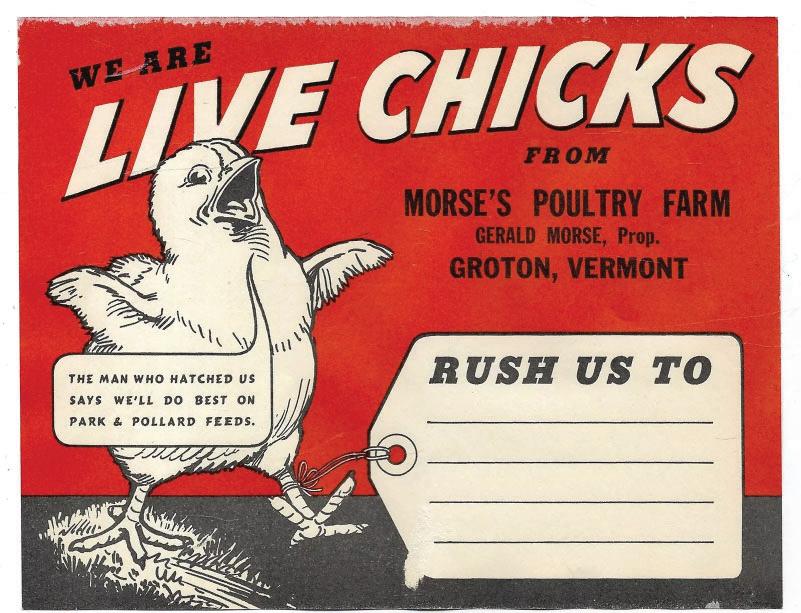
About 4,000 chicks were already dead, but the animal center sprang to action immediately to care for the remaining 8,000 or so tiny balls of fluff. It’s not clear why the USPS deemed the chicks “undeliverable,” or why it didn’t forward the chicks to their rightful destinations when discovered (the recipients would have been capable of caring for the survivors, after all), but they couldn’t be returned to Freedom Ranger, due to “biosecurity concerns,” according to the hatchery. I suspect large number of dead chicks raised biohazard risks for completed delivery.
During the ensuing weeks, employees and volunteers worked round the clock to care for thousands of chicks and get them adopted into loving homes. Yes, that’s right. As a no-kill Society for the Prevention of Cruelty to Animals (SPCA) shelter, the facility repeatedly turned down offers from those wanting to raise the chickens for meat, thus complicating matters further. As of this writing (May 25), there were no chicks still available on the center’s website and the center had supposedly expended more than $100,000 for their care. Ironically, most of the chicks were classified as “broilers,” meaning they were bred more for meat than egg production — or becoming pets.
As a somewhat amusing side note, the animal center had a memorandum of understanding with the DDA as a state vendor for assisting the shelter with funds to help with animals sent there. For chickens, the rate was $5 each per day. Clearly, neither was prepared for the influx of 8,000 or so chicks for roughly
20 days (a more-or-less $4 million fee). DDA reportedly walked away from the agreement, unable to allocate the necessary funding on short notice.
In the end, it was estimated that about 5,000 birds survived; as of May 20, about 3,000 chicks had been adopted at a cost of $3 each. I assume the rest were adopted as well. The center would normally have charged much higher fees, considering its adoption fees range from $40 to more than $450. Both the DDA and the center spoke of trying to pressure the USPS to pay some of the associated costs for a problem of its causing. As of this writing, no agreement has been reached.
Shown below (and on the following pages) is the original mailing label and both sides of a gorgeous mailing tag from a 1924 (April 26) shipment of eggs for hatching, mailed from Lexington, Ind., to Paris, Ohio, a distance of about 335 miles. The tag bears a single-stamp franking of 12¢ (Scott 512). Although there is no hand-stamped marking on the tag or address label (it likely would have been on the parcel), the 12¢ stamp perfectly pays 7¢ postage, for a one-pound parcel post package to Zone 4 (300-600 miles), plus 5¢ insurance for coverage between $5.01 and $25. It was standard practice to mail eggs by insured parcel post.
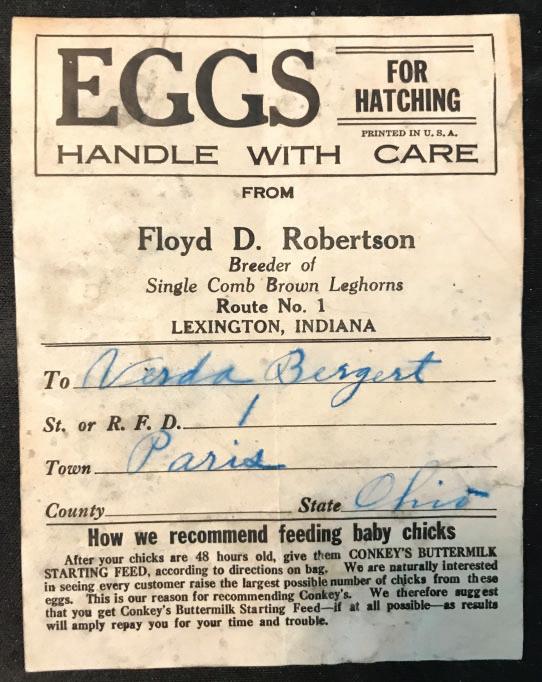
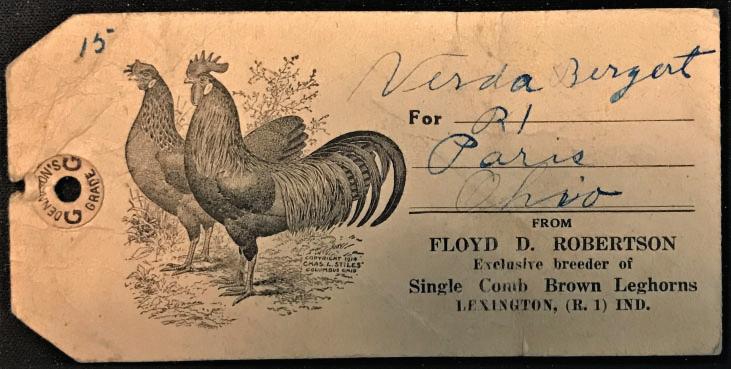

After the advent of railroads, it became possible to ship fertilized eggs to remote rural locations for hatching and raising broods. With a standard incubation of 21 days or so for chickens, this provided a secure time period for delivery before hatching. However, eggs are fragile and temperature must be consistently maintained at about 100 degrees Fahrenheit.
As faster trains, then trucks, shortened delivery times, it suddenly became possible to mail live chicks. As mentioned, this was first done in 1892, when shippers realized there was likely a more efficient way.
Let’s take a quick look at nature and chickens. The last thing a baby chick does before breaching its shell and joining the outside world is to absorb the yolk of the egg it’s in. An egg yolk contains all the nutrition and energy a baby chick needs for a period of 48-72 hours. The reason for this is so a mother hen can con-
tinue to sit on unhatched eggs without having to worry about running around to find food for hatchlings.
By the end of the 72 hours (essentially three days), all viable eggs should have hatched. The chicks will be hungry, but alive, and the mother hen can lead them away from the nest to find food and water.
Thus, by mailing chicks the day they hatch, there’s usually a three-day period to get them to their destination.
If you are interested in the official Domestic Mail Manual requirements for mailing chickens, they are reproduced following:
526.31 General
The following live, day–old animals are acceptable for mailing when properly packaged: chickens, ducks, emus, geese, guinea birds, partridges, pheasants (only during April through August), quail, and turkeys. All other types of live, day–old poultry are nonmailable. Day–old poultry vaccinated with Newcastle disease (live virus) also is nonmailable.
526.32
The specific types of day-old poultry named in 526.31 are mailable subject to the following requirements:
1. Poultry that is not more than 24 hours old and is presented for mailing in the original, unopened hatchery box from the hatchery of origin.
2. The date and hour of hatching is noted on the box by a representative of the hatchery who has personal knowledge thereof. (For Collect on Delivery (COD)
* All Programs will be available via Zoom; programs that will only be available online are noted as: (Zoom only)
Sept. 3 Postal History of the United Colonies, Vernon Morris (Zoom only)
Sept. 17 Postal Reform, James Grimwood-Taylor
Oct. 9 Korean War POW Mail, John Hotchner
Oct. 22 The Lithographed Washington-Franklin Heads, Andrew Kelley
Nov. 5 Single-Frame Competition
Nov. 12 We were British Once, Tim O’Connor
Nov. 19 The U.S. 10¢ 1869 Issue – A 50-Year Study of Postal Uses (tentative), Michael Laurence
Dec. 3 Hong Kong, China overprints, Ian Gibson-Smith
Dec. 10 Governors Open House,
Dec. 17 Trinidad Britannia issues, Nigel Mohammed (Zoom only)
shipments made by a hatchery for the account of others, the name or initials and address of the hatchery or the Post Office box number and address of the hatchery must be prominently shown for this standard.)
3. Box is properly ventilated, of proper construction and strength to bear safe transport in the mail, and is not stacked more than 10 units high.
4. Day–old poultry is mailed early enough in the week to avoid receipt at the office of address (in case of missed connections) on a Sunday, a national holiday, or the afternoon before a Sunday or national holiday.
5. Day–old poultry can be delivered to the addressee within 72 hours of the time of hatching.
6. Day-old poultry sent via air transportation must meet all provisions of the airlines. Delivery of the mailpiece is dependent on the availability of air carriers having available equipment to safely deliver the day–old poultry within the specified time limit.
7. Day–old poultry that is first shipped via a commercial air express or air cargo service and then presented for mailing to a final destination must be in good condition and properly packaged as specified in 526.32a-e.
8. Boxes of day–old poultry of about identical size, securely fastened together to prevent separation in transit, may be accepted for mailing as a single parcel, provided the total length and girth combined does not exceed Postal Service limits.

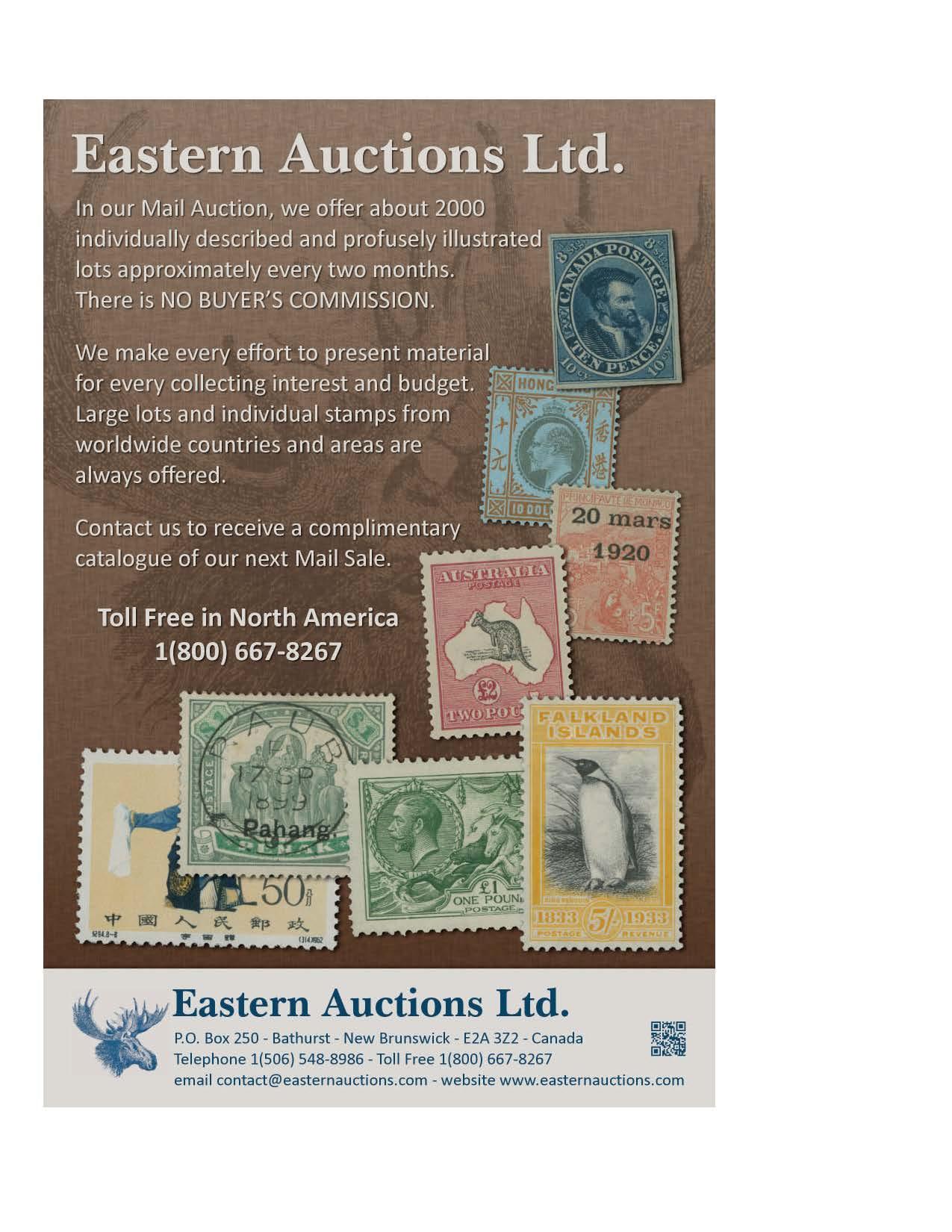
Prepare for the sale of the JP
Universal
(„UPU“)
The coolest lots include extremely rare FIRST DAY USES from the date the General Postal Union came into operations on 1 July 1875!
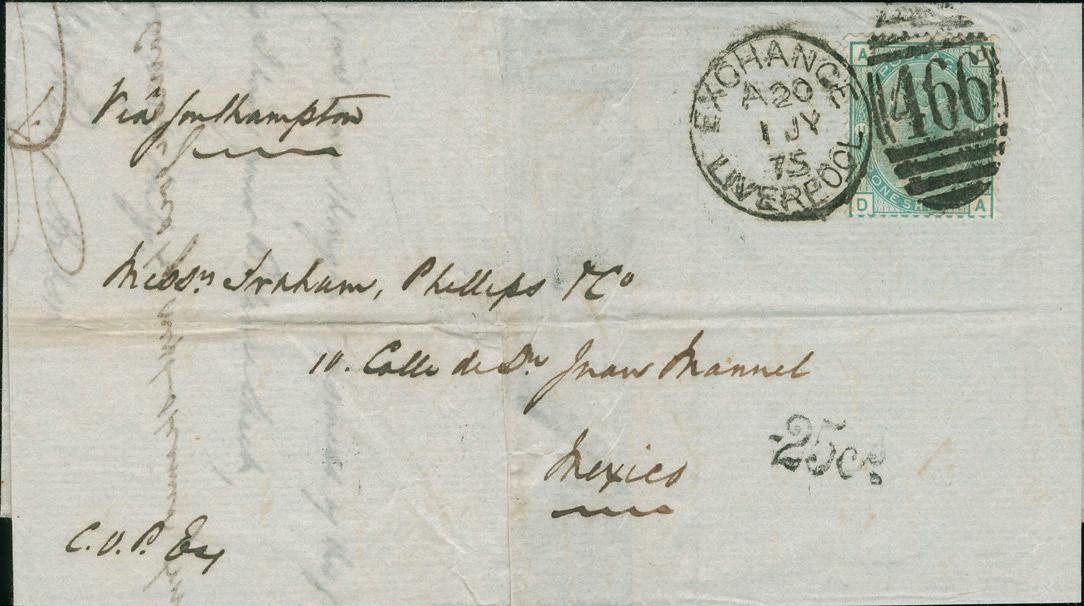




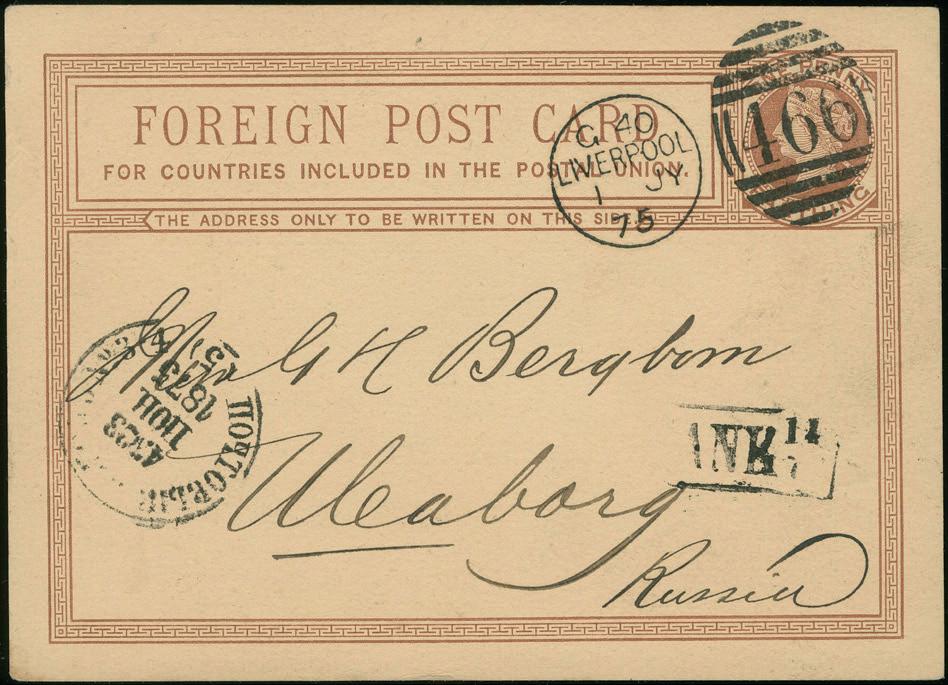

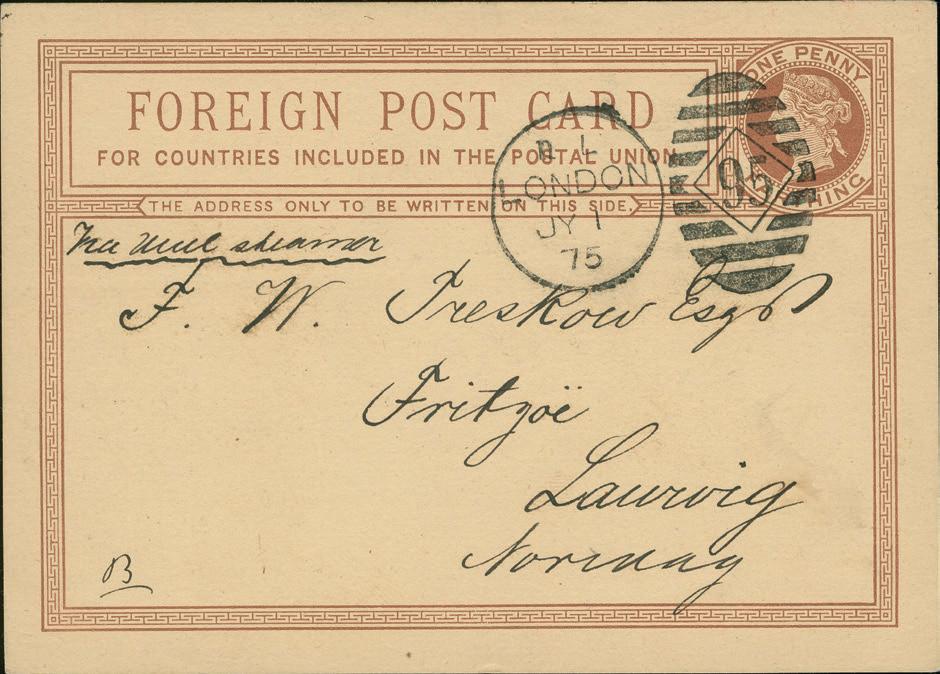




Following part I from the JP Gough Collection, which will be sold by Heinrich Köhler 22–27 September, Corinphila will offer part II during our Auction Event Week in Zürich 24–29 November.
The collection is already a living legend, and with the publication of the EDITION D´OR book, you can perceive the cool factor of the lots being on offer.




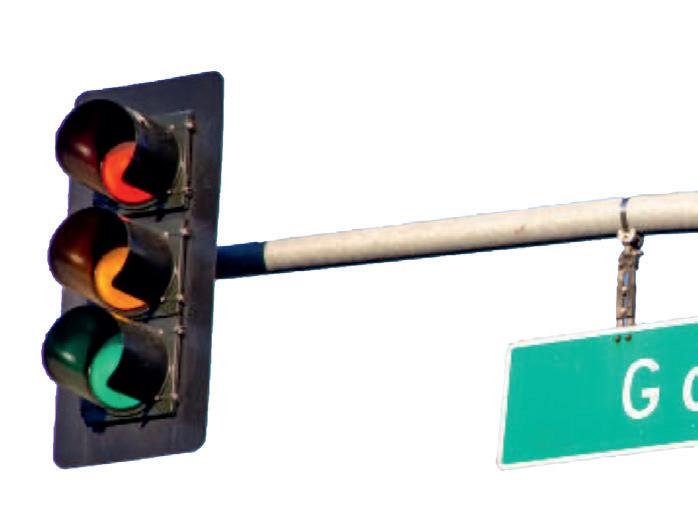

Great Britain, undated newspaper branch “NPB” handstamp to printed shipping circular. Sent in the open mails (transit marks to back), via railway 1 July 1875; the first day of the GPU.

First Day of Issue meets
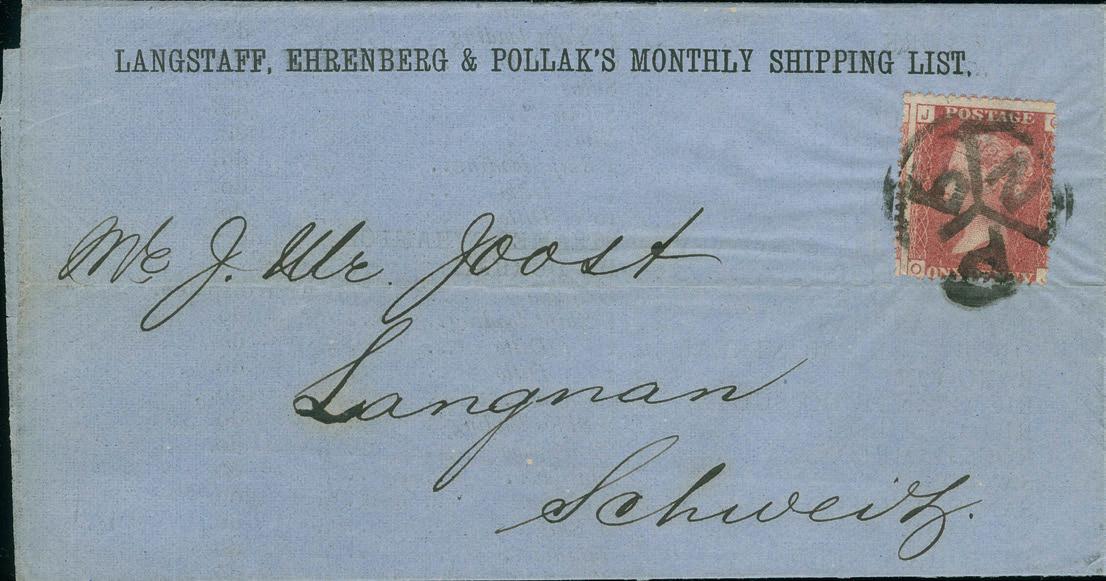

An extremely rare postal stationery of Switzerland from the first day of the Universal Postal Union.







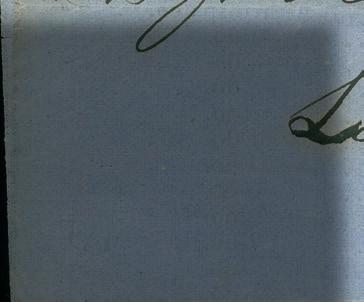
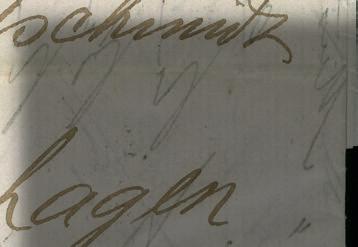
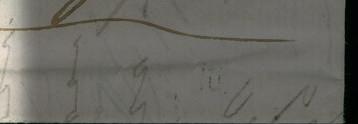


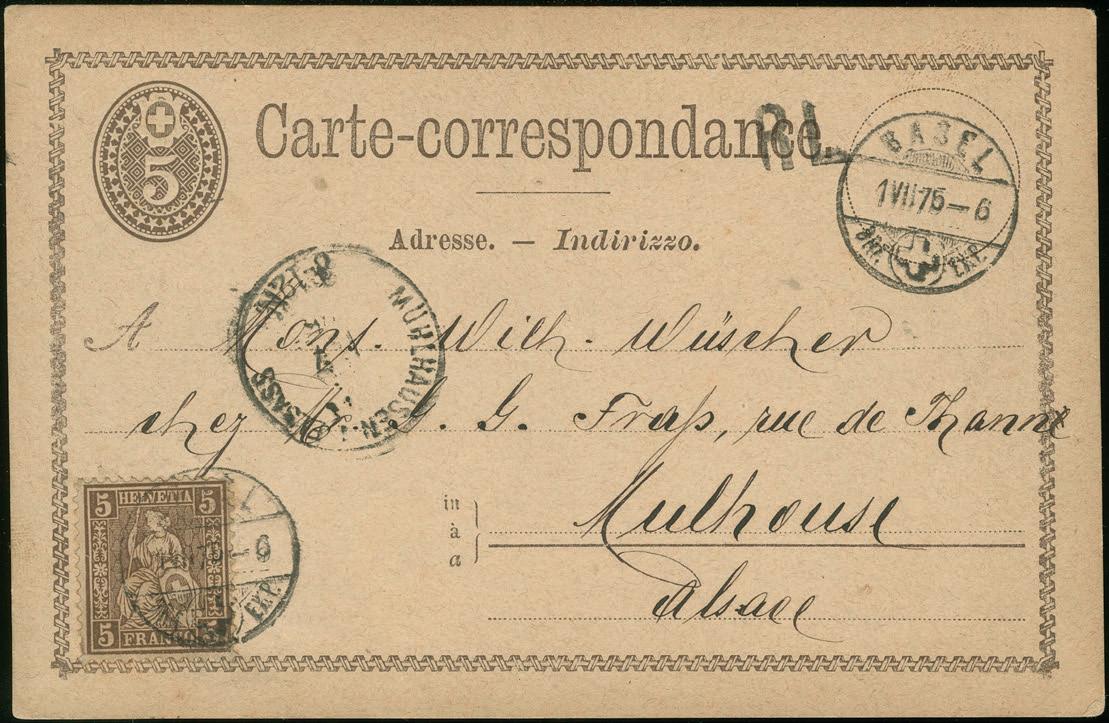



Please send your order to Corinphila Auctions or buy online from www.heinrich-koehler.de
Hardcover with dust cover 344 pages, with 288 original collection pages
Price: 129.– CHF* *Price plus packaging and shipment
Richard Coffey
I caught myself becoming briefly enlightened the other night while tiptoeing toward comprehension of a cover. It was one of those magical moments when the cover itself takes the tiller and steers the investigation along a surprising new path – a fresh trail through the litter of ages long gone.
There is magic in a room of stamps and covers, each a bearer of wonder and suspense, though my delight erupts when I discover a feature on a cover or a stamp that I hadn’t noticed before, or that I had perceived in a completely different light, a different context.
Context is a precept in exhibiting – when you get it right, the stamp or the cover awakens, its story takes on an authenticity that prevails and becomes a part of the artifact’s identity. Context may be as simple as the setting, the stamp’s position on an exhibit page or it might ignite a crescendo of importance, gradually illuminating the meaning of an issue of stamps. When I try to refresh my thoughts about context, I think of an inert musical quarter note alone on a white page versus a robust quarter note positioned on musical staff where it comes to life; where it has meaning.
Meaning doesn’t come with stamps and covers; collectors imbue meaning by providing a context in which a stamp reveals itself – reveals its story. The man who collects the 1918 Jenny in the context of foundational airmail service in the United States builds a different story of the stamp than the woman who collects the same Jenny in the context of stamp design – it’s the story that gives a stamp or a cover its meaning.
It’s one thing to be fond of a stamp or cover and adorn it with a powerful story, and quite another for it to step alone into the light and be judged. What our eye beholds may often fail to jive with a more grounded opinion of a philatelic jury.
This reminds me of my short tenure in a grade school orchestra. I loved the violin dearly and I used to go home from school with glowing affection for my developing musicality until one day my mother cheerfully asked the teacher about my progress with the violin. “Well ...” the teacher said and charitably took my mother aside, “I don’t think Richard’s talents lie in music – but he does seem to be enjoying himself,” which is to say that what our eyes (and ears) behold may not have much to do with reality ... still, on a sweltering summer evening there are sure to be philatelists toiling to create stories with a handful of definitives and an assortment of complimentary covers; there are notebooks on the desks and


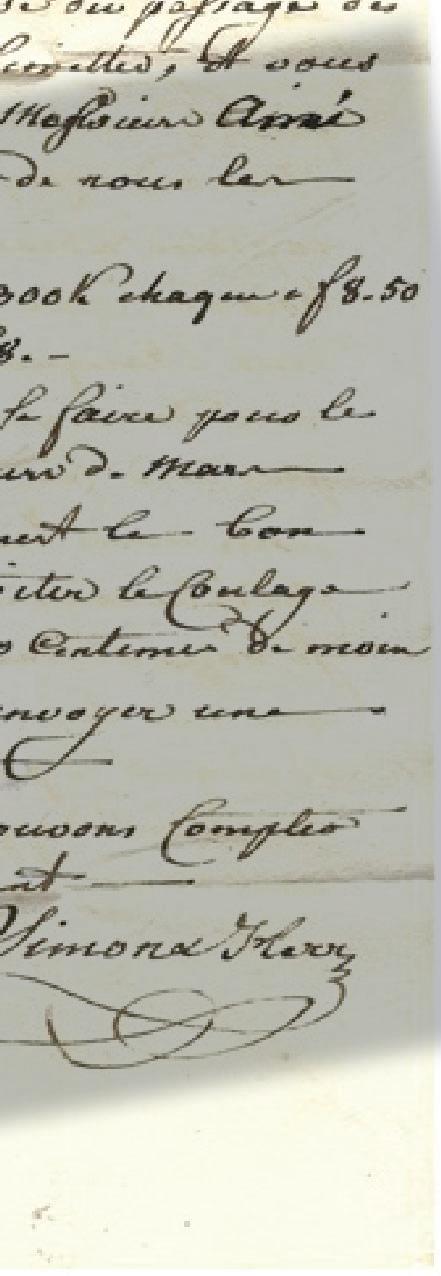
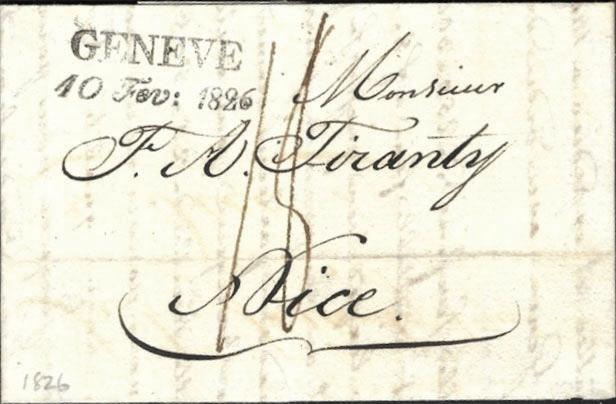



Figure 1. Presenting a cover with a bit of content is one way to begin building context in an effort to derive meaning, – a story – from a cover. Here, even a partial view of contents gives this 1826 folded letter a hint of life. The cover is a common business letter (an order from Geneva for several wine barrels from a firm in Nice on the French Riviera). After the Napoleon Wars, Nice, a French city, was awarded to the Kingdom of Sardinia in 1814 by the Congress of Vienna where it remained until 1860 when Napoleon III of France retrieved Nice from Italy by the Treaty of Turin. The cover was rated in Geneva at 18 Decimes (per single sheet at 7.5 grams or less) with a mail coach ride of 300 miles.
frames of faultless exhibit pages, neatly stacked, awaiting the arrival of a muse who will superintend an arrangement of this magical accumulation of paper bits, which will, like Cinderella, slowly become a compelling story.
Assuming that this exercise is occurring all over the world and that collectors are beholding and stories are evolving, then this fellowship of ours, this philatelic journey is producing a universal postal history of our small and fragile world.
Boston 2026 World Expo (Boston 2026), the 12th decennial world philatelic exhibition in the United States, will be held at the Boston Convention and Exhibition Center May 23-30, 2026. With approximately 4,000 frames of exhibits, it will be the largest philatelic exhibition in at least a decade.
World philatelic exhibitions are generally sanctioned by the Fédération Internationale de Philatélie (FIP), the international organization that sets the standards for these competitions, which include, among other things, the entry requirements, exhibition classes, the qualification and selection of the panel of jurors, evaluation criteria and medal levels.

There are several different types of FIP world exhibitions. About a year ago, the Boston 2026 Organizing Committee (OC) decided to seek FIP Recognition, for a variety of reasons. However, negotiations between the OC and the FIP board have continued, and we have reached mutually agreeable conditions that led to a change in FIP status. Like most previous world philatelic exhibitions in the United States, Boston 2026 is now a General World Stamp Exhibition with FIP patronage, the highest level of FIP world exhibition. The new contract was signed May 10, 2025. There are several other FIP world exhibitions planned for 2025 and 2026, but Boston 2026 is the only General World Stamp Exhibition with FIP patronage.

This will likely result in an increased level of participation by international exhibitors, bringing in more top-notch exhibits, attracting additional international dealers and auctioneers and a higher number of visitors from abroad.
The FIP is made up of national philatelic federations from each member country. So far, 65 member
federations have appointed a national commissioner to represent their countries and take their exhibits to and from Boston 2026.
The United States has three national commissioners in charge of the transportation of exhibits. Covering the west, central and east regions are Vesma Grinfelds, Greg Shoults and Tom Fortunato, respectively. There will also be a Bin Room commissioner, Frederick Lawrence, assigned to handle exhibits carried directly by their owners.
What are the implications of being a General World Stamp Exhibition for exhibitors? It means that all FIP exhibition classes will be included, all members of the jury must be FIP accredited and the medal levels will be recorded by the FIP for future competitions. First-day cover (FDC) exhibits are not an FIP exhibition class, but will be accepted as an experimental FIP class at Boston 2026. Also, there will be multiple FIP-sponsored seminars open to the public on a variety of topics, and the opportunity for aspiring FIP jurors to do an apprenticeship.
The revised Boston 2026 individual regulations (IREX), now under FIP Patronage, and the rules for FDC exhibiting will soon be published on our website.
Applications for any exhibitor wishing to participate in Boston 2026 must be made through the website, www.Boston2026.org. The exhibit entry process has already started and will end after Sept. 30, 2025.
—
Yamil H. Kouri, Jr., president Yamil.Kouri@Boston2026.org

Order the auction catalogues now!
Top class printed catalogues featuring great rarities for discerning collectors! Our offer:
Universal Postal Union ("UPU") and Its Impact on Global Postal Services –The JP Gough Collection
Germany from 1849 –Austria from 1850 – The "American" Bruce Wright Collection (part II)
Heligoland –
The Hans-Jürgen Borowski Collection (part III)
Heligoland and Romagna printing plates
German Empire – Shield Issues 1872–75 – The "Baghira" Collection (part II)
German Colonies and German Foreign Post Offices –The "Calibra" Collection (part II)
The City of Munich –Homeland Collection
From mid-August: The online catalogue with thousands of images as well as registration for online live bidding are available on: www.heinrich-koehler.de











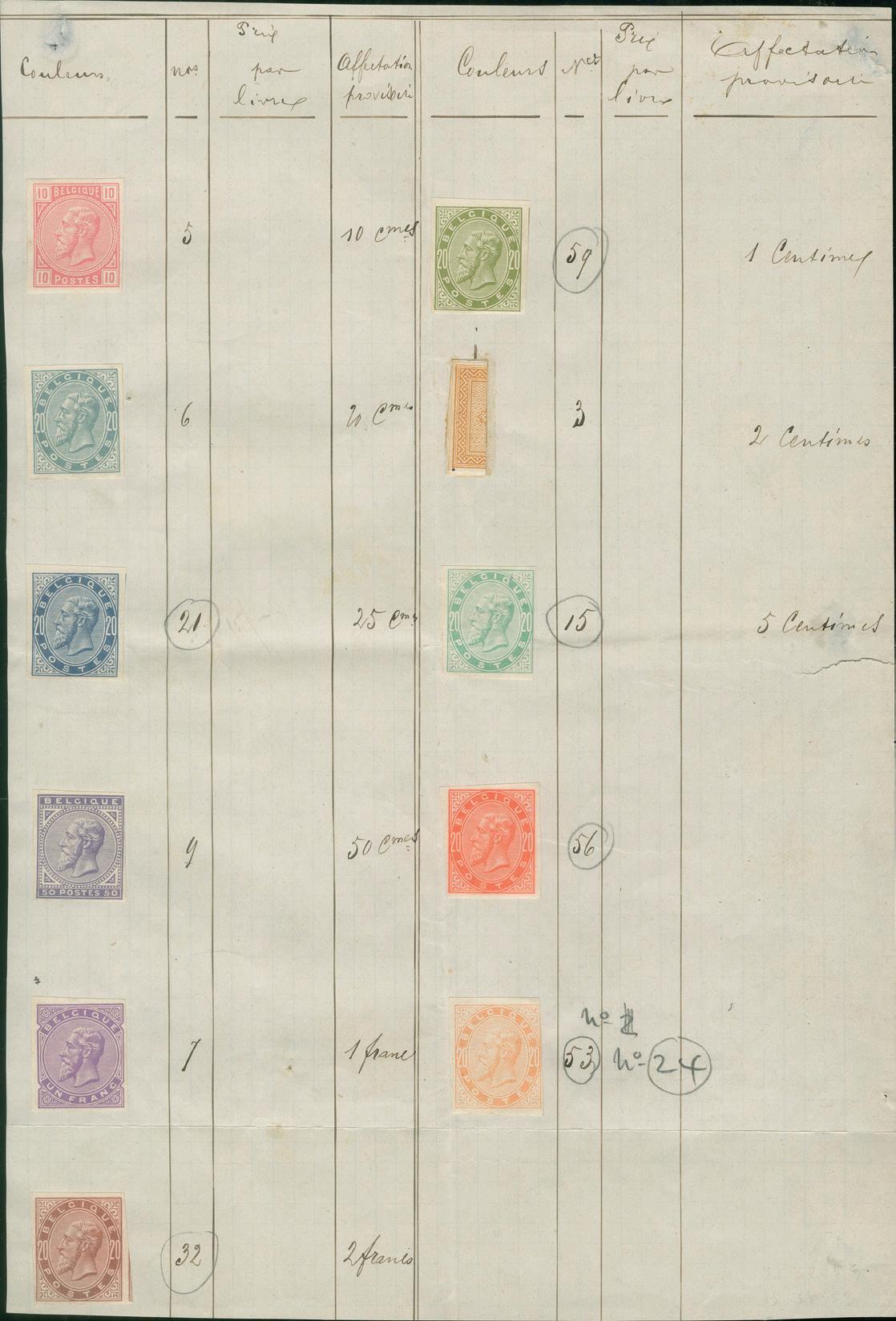
▲ Belgium 1883, King Leopold II., De La Rue archive appendix sheet with 10 imperforate colour proofs; all annotated in manuscript for the new values in the UPU colour scheme, required in the Congress of 1878. A most attractive and unique item. Provenance: "Severin" (2012)

Hasengartenstr. 25
65189 Wiesbaden, Germany

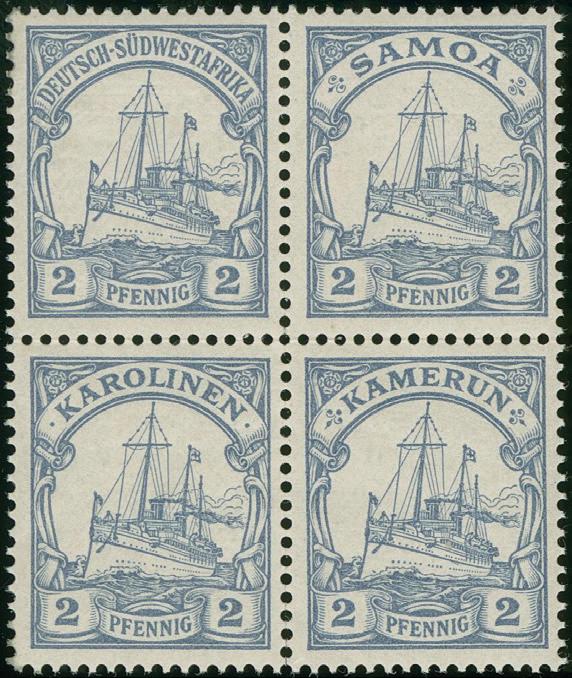



▲ German Colonies 1900, proof of the Kaiseryacht 2 pf. in a block of four with the various inscriptions “DEUTSCH-SÜDWESTAFRIKA”, “SAMOA”, “KAROLINEN” and “KAMERUN”, unused/mint. A unique item with all four different proofs.

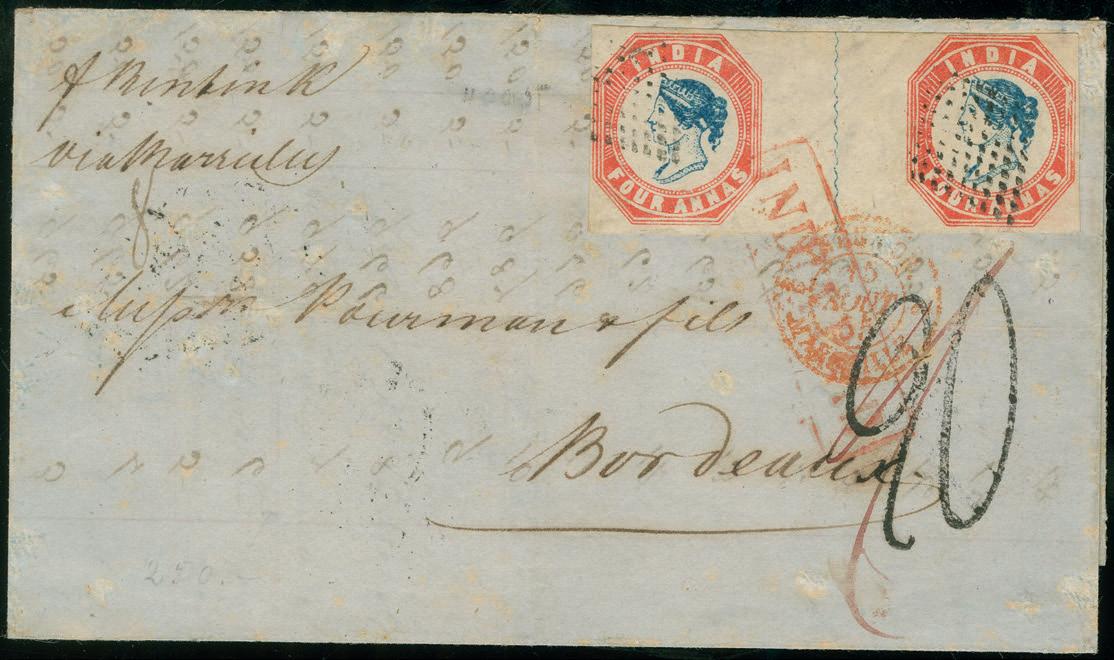
▲ India 1854, 3rd printing 4 a. in horizontal pair on letter sheet from
and beauty!
Phone +49 611 34 14 9-0
www.heinrich-koehler.de info@heinrich-koehler.de
William N. Kelly
This manuscript presents what is thought to be the first complete story on how the Congo Free State (CFS) postal system started, evolved and ended. It is organized chronologically and presented by periods when groups of new postal stations were approved. The scope of the manuscript includes an introduction, background, new postal offices, postal rates, stamps and postal cards, postal routes, a summary and a conclusion.
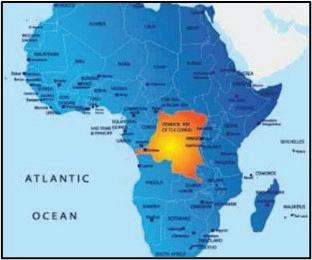
In 1877, after three years of exploring the 7,000 miles of the Congo River from its eastern reaches, Henry Morton Stanley emerged at the mouth of the river on the Atlantic Ocean proclaiming to the world – “here lay the next great El Dorado” (Figure 1). In response, King Leopold II of Belgium (Figure 2) said – “I do not wish ... losing a fine chance to secure for ourselves a slice of this magnificent African cake.”
Leopold realized basic infrastructure – roads, a railroad line around the first Congo River rapids, and river stations – were needed to conduct trade. He thought this would establish his prima petition over the Congo area. Therefore, in 1878, using his own $19M Belgian Francs, Leopold sent Stanley back into the African rainforest with orders to “purchase as much land as you will be able to obtain.” Stanley was able to negotiate treaties with 450 tribal chiefs. Leopold used the treaties to convince other Western colonial powers that he had legal right to the Congo River Basin.

The Berlin Conference of 1884-85 established the CFS with King Leopold II as its sovereign leader, based on three promises: 1) safeguard free trade, 2) do away with the slave trade and 3) never request funding for his personal “project.” His stated motive was “to bring civilization to the Congo people,” hence the name – “The CFS” (Etat independent du Congo). He often talked about building an empire that would increase his nation’s prosperity. He is quoted as saying, “to gather rubber in the district, one must cut off hands, noses and ears.” The truth is – the CFS became Leopold’s private fiefdom with a goal to exploit its natural resources – ivory, gold, and rubber – even at the expense of its natives.
212 www.collectorsclub.org July-August 2025

In 1886, the CFS was wild, primitive and geographically diverse. Many small tribes lived along its rivers, but the people rarely ventured far upstream or downstream from their villages. Contact with others was either by foot on trails or by small riverboats. Most Congolese people shared important social structures and beliefs. Labor was divided by gender, and economics were organized at the village level. Most villages were remote (Figure 3). Note: The government issued 72 postal view cards like this having a picture side printed by publisher Ets Nels in Brussels, then the card was sent to Waterloo & Sons in London to receive the franking face. Their purpose was to promote interest and investment in CFS.
Prior to the CFS (Jan. 1, 1886), there was no official postal system. However, a small second-class Angolan (Portuguese) post office opened between 1870 and 1875 on the north side of the Congo River near the Atlantic ocean. All Portuguese boats sailing between the west coast of Africa and Portugal were required to stop at Banana for mail on both the outward and return voyages. The postal business was good so, on Dec. 30, 1882, Angola purchased a large plot of land in north Banana for a larger post office.
One of three cancellations used by the Angolan post office was a Type I double-circle cancellation (Figures 4 and 4a). The post office officially closed after three years on May 5, 1885, seven months before the territory became the CFS. Some think it was actually closed in December 1884. The last letters known from Banana with Portuguese cachets/cancelers are dated November 1884.

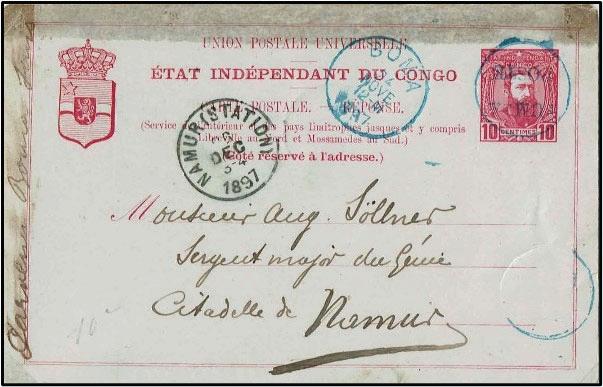
The International Association of the Congo (AIC) was established in 1884 by King Leopold II to acquire new territories, establish control of the Congo Basin and exploit its economic resources. Instead of using the Angolan Banana post office, agents of the AIC preferred to send their mail directly aboard steamships stopping in Banana. According to Maselis, “it was partly franked using stamps of the same country as the steamship on which they were carried.”
To carry mail from far regions of the Upper Congo (the area beyond Leopoldville), the AIC developed its own mail system, which was difficult and dangerous because of the hostile native population, and many natural obstacles, such as large, unnavigable sections of the Congo River. Private individuals carried mail to remote areas operated by traders or missionaries, and it often took months to reach its destination.
In 1884, Hertwig, an employee of the AIC stationed in Issanghila, created (unofficially), a set of labels (Figures 5a-c); he said it “made it easier to sort the mail.”
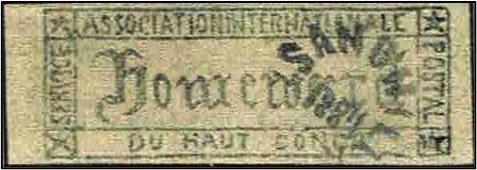
To avoid issuing an illegal private postage stamp, he called these “sorting labels,” and made three dies (from engravings on wood blocks) with which he could print three different labels (authentic ones are rare). The “HOMEWARD” label was for overseas mail. The white “INLAND” label was for mail going to the Upper Congo. The green “INLAND” label was for mail going to the south Congo. The labels or imprints were pasted or applied directly on the cover.
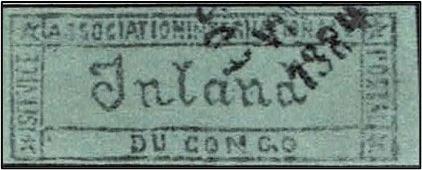

Edouard Manduau was hired by the AIC as a clerk in 1884. Like Hertwig, he took upon himself to make improvement to the embryonic postal services by applying one of four types of one- or two-line handstamps to outgoing mail bound for Europe (Figure 6). These

postmarks are known on mail dispatched between June 1884 and June 1885 and are found in both red and black.
From 1883 to January 1885, two existing supply routes were used for pre-CFS mail delivery. All Hertwig mail went via a North-South Route (Issanghila-South Manyanga-Leopoldville), and all Manduau mail went via a Southern Route (Vivi-South Manyanga-Leopoldville).
The CFS Postal Service was decreed by King Leopold II on Jan. 1, 1886, the same day the CFS became a member of the Universal Postal Union (UPU). It was established to facilitate communications between the CFS and Belgium and to support new trade. The postal administration was in Brussels and was assigned to the administrator general of the CFS.
First Postal Stations. Initial plans called for three main categories of post offices: principal, sub-post offices and auxiliary post offices. Each sub-post office and auxiliary post office was responsible to its assigned principal post office. Mail to and from the smaller offices passed through the principal post office for which they were responsible.
The first four post offices opened on Jan. 1, 1886, and three were located near the mouth of the Congo River. (Figure 7)

1. Boma was located 60 miles upstream from the Atlantic Ocean on the Congo River and was the capital of the CFS. It was a principle post office responsible for organizing postal services between the Lower Congo (Banana to Leopoldville) and Upper (Haut) Congo (the upper reaches of the Congo River beyond Leopoldville). Boma was also an exchange office linked to offices in Brussels and Antwerp.
2. Banana was located at the mouth of the Congo River. Like Boma, it was also a principal and exchange office in charge of the incoming cross-border mail, and the mail to be sent abroad. (Figure 8)
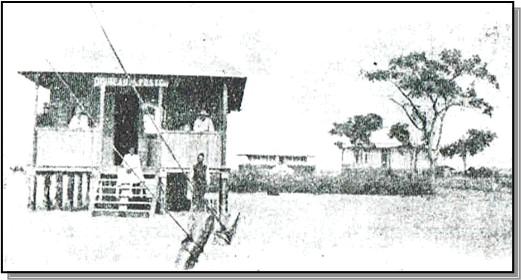
3. Vivi was a principal post office located on the north bank of the lower Congo River, across the river from Matadi. It opened on Jan. 1, 1886, and closed after only 108 days (May 18, 1886), because the Boma office became responsible for organizing postal services between the Lower Congo and Upper Congo. Consequently, the Vivi post office became redundant. Due to its short duration, postal items with Vivi cancellations are rare (Figure 9).
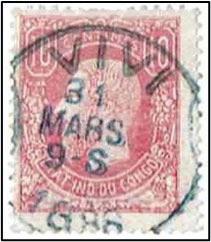
1,1, DMTY) of March 31, 1886.
4. Coquilhatville was the fourth post office and opened on July1, 1886. This outpost substation of Boma was located 1,000 miles upstream from Boma. Stanley found this village and called it “Equatorville,” because the equator crosses just before it.
First Postal Rates. The first postal rates were 25¢ for internal letters and 50¢ for foreign use. Postal cards were 15¢ for both internal and foreign use. Registration (Figure 10) was for postage, plus 25¢ for internal use, and postage plus 50¢ for international use. And the delivery fee was 50¢.
First Stamps. The issuing of stamps for the newly created CFS was a matter of urgency. The first five stamps (Table 1 of Appendix) share three basic designs with differing frames showing Belgium’s King Leopold. They were changed from the Belgium issue of 1869-78 by altering the inscription and


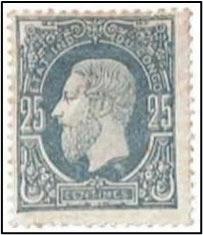
some of the values and were surface printed by the Belgian Government Printing Works in Malines, Belgium (Figures 11 and 12). All were issued Jan. 1, 1886.
First Postal Cards. The first postal cards sold were for 15¢ and intended for foreign use. The first postal card, a 15¢ brown stamp on buff, was issued Jan. 1, 1886. The number printed was 15,000. The second one, a 15¢ blue stamp on a light blue card was issued July 1, 1886; 60,000 were printed.
Early Mail Movement. Early steamship companies delivered mail to and from the CFS. The Empreza Nacional had one departure every month from Lisbon. The British and African Steam Navigation Company and the African Steamship Company had one departure every month from Liverpool to Banana, then eventually to Boma. At first, mail movement between the first four post offices was delivered by runners and, in some cases, using dugout canoes.
During this period, conditions were still primitive and dominated by tribal rules and culture. Although the first year of the new postal service was deemed successful, it was still in its infancy. Postal authorities soon realized additional postal offices and services were needed.
Three New Post Offices. At first, postal stations were developed along the Congo River and its tributaries. As colonization and the presence of Europeans gradually increased, other offices eventually opened further inland.
5. N’Zobe (later named Zobe) was located across the river from Boma and opened on April 15, 1888, then closed on April 1, 1898.
6. Leopoldville was located 296 miles upstream from Boma. The post office started as a substation of the principal post office at Boma on May 1, 1889. It was upgraded to the principal post office on March 15, 1900.
7. Matadi was located 92 miles inland from the mouth of the Congo River and between Boma and Leopoldville. It became an important harbor and place to drop off and pick up mail from further inland. It started as a principal post office on Jan. 3, 1891.
Parcel Post Introduced. It soon became apparent that a postal service for letters and postcards was not sufficient to ensure economic growth. So, on Feb. 28, 1887, an agreement was signed between the CFS and the Belgium State Railways, for parcel post service between the two countries. Only the Banana and Boma offices were responsible for the parcel service. At the time, there was no domestic service for parcels.
Parcel Post Rates. Parcels were limited to 11 lbs. and a maximum size of 18 by 6 ft. For parcels sent from the Congo to Belgium, a fixed rate of 3.5 Fr. (1 Fr. for the Congo Postal Authorities, 2 Fr. for the transit and 50 centimes for the Belgium Authorities) was established.
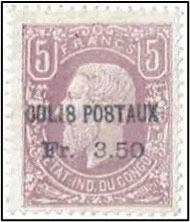
Parcel Post Stamps. In 1887, there was no stamp with a denomination of 3.5 Fr. Therefore, the first 5 Fr. value was surcharged by a rubber handstamp ‘COLIS POSTAUX’ 3.5 Fr. Subsequently, the 5 Fr. value of the second series was similarly surcharged (Figure 13). Later the hand stamp was changed to a double-lined frame and applied to both the violet and the gray 5 Fr. values of the second issue (Table 2 of Appendix).
Parcel Post Use. In 1887, 36 parcels were dispatched abroad and 186 were received from abroad.
Postal Rates. Except for parcel post, postal rates stayed the same during this period.
New Stamps. On Oct. 20, 1887, eight new stamps (5¢ to 5 Fr.) were issued pic-
218 www.collectorsclub.org July-August 2025
turing King Leopold (Figure 14); 25 Fr. and 50 Fr. stamps were printed but never distributed.
New Postal Cards. Five new postal cards – two domestic and three international (like Figure 15) – were issued during this period. Two had attached “reply cards.” These presented a problem when someone used the reply card for outgoing mail. Hence, they were marked with the expression “Boma Carte Incomplete” (Figure 15). Use of postal cards during this period started slowly – only 480 were used in 1887, but rapidly grew to 2,316 in 1891.
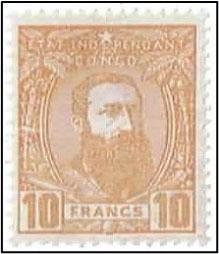
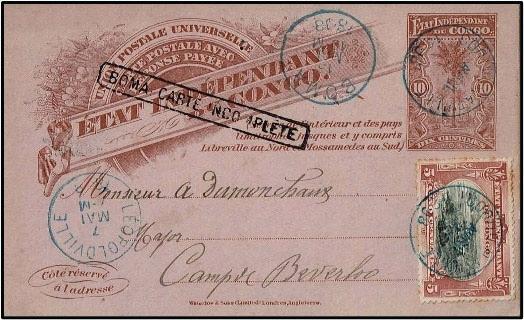
Mail Movement/Routes During This Period. Early on, runners delivering the mail had to make it from Leopoldville to Boma in 11 days. They left on the first and 15th of each month and could average 36-41 miles a day. Mail was put in sealed bags in Boma and Matadi with a register showing the number of documents it contained.
Eventually, some shallow draft, ocean-going ships could go to Matadi, but no further due to shallow water and the rapids. Thus, the need for river (paddle) steamers (Figure 16) with low drafts. The first river steamers on the Congo River were built in sections and hauled overland to the middle Congo River by Stanley in 1879. The Oxford Baptist Missionary Society also built a steamer for evangelical work in the area in 1884.
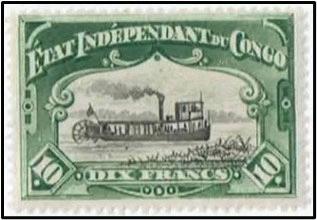


In 1886, five steamers belonging to the CFS were carrying mail on the lower Congo River between Banana, Boma and Matadi (a 93-mile stretch). Until 1902, these boats delivered mail posted with the BATEAU-POSTE cancellation (Figures 17 and 18) up and down the Congo River.
Accelerated postal growth occurred during this period based on the number of new stamps and new postal cards issued, and new post offices opened. Several events catalyzed this growth: a zeal by the European community for civilizing primitive areas, Christian evangelizing by an increasing army of missionaries and increasing opportunities to conduct commerce.
New Postal Stations Established. Fifteen new post offices. (Figure 19).
8. Popokabaka – Feb. 24, 1896
9. M’Toa – April 1, 1898
10. Basoko – July 1, 1896
11. Albertville – July 1, 1896
12. Bumba – July 1, 1896
13. Lukungu – July 1, 1896
14. Nouvelle-Anvers – July 1, 1896
15. Nyangwe – July 1, 1896
16. Stanley Falls – July 1, 1896
17. Cataractes – July 1, 1896
18. Sankuru – July 22, 1896
19. Lusambo – July 22, 1896
20. Tumbu-Mani – Nov. 25, 1896
21. Tumba – Nov. 26, 1896
21a. Ibemo – March 31, 1897
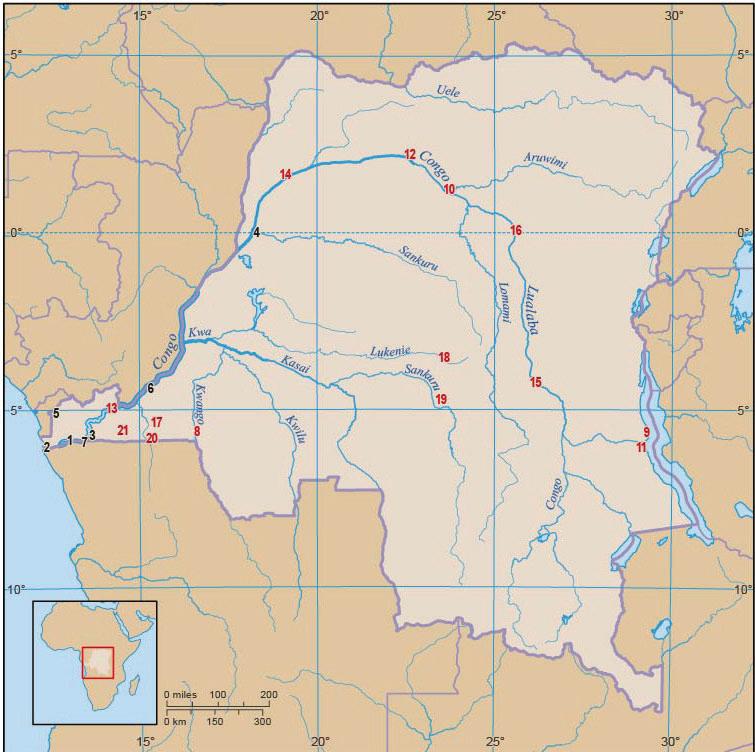
Stamps/Rate Change. Starting in 1894, the CFS issued an attractive series of 16 line-engraved unilingual (French), bicolor stamps with black centers and vibrant colors on the borders. Most were Congolese views (Figure 20) and were the first colonial stamps issued. The frames are engraved with ornate inscriptions
220 www.collectorsclub.org July-August 2025
“Etat Independent du Congo.”They are commonly known as “Mols Stamps,” as the designs were based on a diorama exhibition created by Robert Mols and Piet van Engelen for the Antwerp Exposition of 1894. The image for the 5 Fr. stamp may have been from a photo.A few of three Mols stamps were printed with inverted centers: the 10¢ blue stamp of 1895 (40 known), the 10 Fr. green stamp of 1898 (seven known) and the 10¢ carmine of 1915 (10 known).
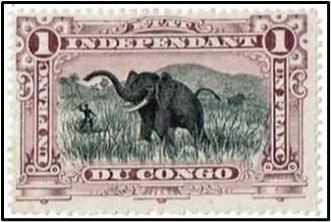
The postal rate changed for internal letters from 25¢ to 15¢, while the other rates remained unchanged.
Postal Cards. Eight new postal cards were issued during this period – four each for international and domestic use. The 1892 postal card issue used two palms and a star image, while the 1894 issue used an image of Leopold II. From 1892 to 1896, the usage of postal cards increased to 29,130.
Mail Movement/Routes. Once post offices emerged, marked by offices in Coquilhatville, Bumba, Stanleyville, Nyangwe and Albertville, east-west and southern routes were established for communication within and outside the CFS.
East-West Routes. When the Banana, Boma and Vivi post offices were opened on Jan. 1, 1886, and for five years, only the Lower Congo area had normal postal services. By July 1896, 15 new post offices emerged (seven in the Upper Congo beyond Leopoldville), and a fleet of 10 mail-carrying boats was launched on the Upper Congo. However, because of the rapids between Matadi and Leopoldville, mail still had to travel by land.
Mail to and from the interior was carried by runners to Leopoldville and to the upper Congo using three East-West Congo River routes (Figure 21). Who the
All Collectors Club presentations are currently held online, via ZOOM, beginning at 5:30 p.m. (Eastern). Although there is no cost, pre-registration is necessary.



runners were and how they were paid is unknown. During the early days of the CFS, mail traveling long distances frequently received the postmark of every post office that handled or sorted it enroute (Figure 22).
1. The Northern Congo River Route. Vivi - Matadi - Issanghila - Leopoldville. Sorting was done in Viva. Christian missionaries developed this route to

222 www.collectorsclub.org July-August 2025
supply stations along the river to Stanley Pool. Porters carrying the mail traveled the route twice a month from Boma to Leopoldville, passing through Matadi and Lukungu. The station head offices at Matadi and Lukungu were authorized by postal authorities to add Boma and Haut-Congo letters (from the upper Congo area north and west of Stanley Pool) to the mail bags. These duly franked letters were left in the post box outside the station head’s office and canceled by the double-circle postmark (for mail added from Matadi, Lukungu, Stanleyville, Lukafu, Figure 23).
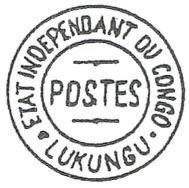
23. Double-
2. The Southern Congo River Route. Boma - Matadi - Manyanga - Leopoldville. Sorting was done at Boma. This was the interior route that met up with the northern route at Manyanga.
3. The East-West Caravan Route. Caravans (Figure 24) were needed to help missionaries travel to arrival destinations and to move material and mail into the Upper Congo using a more southern route.
From April 1, 1888, Boma had taken steps to forward mail from overseas to the Upper Congo by the route of the caravans (Figure 25), this requiring a surtax because it was an additional and unusual transport service. “The levy was made before dispatch to the Upper Congo by means of postage on correspondence to the interior.” Few covers with the surtax have survived (Figure 26). Eventually, many secondary mail routes emerged from the east-west route, consisting of navigable tributaries to serve centers outside the main artery from Boma to Leopoldville.

The Southern Routes. During this time period, a much greater amount of mail started traveling south from the eastern part of the CFS using three primary routes.
1. The Albertville Route. Albertville was located in the far eastern section of the CFS and on the western shore of Lake Tanganyika. The lake’s eastern border was in Tanzania. Mail going to Europe was routed from Albertville to Pweto, then to Musofi, as it was the only foreign exchange office in the eastern section of the CFS. From there, the mail usually traveled to Cape Town, South Africa (Figure 27).
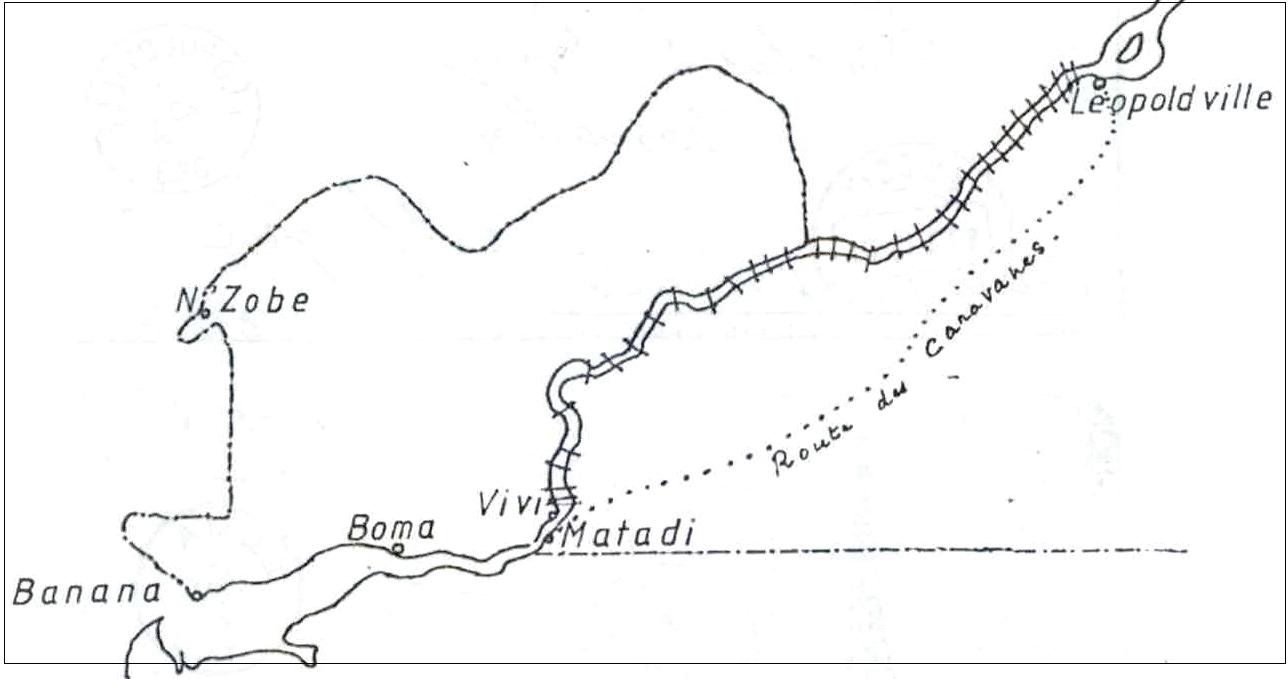

2. The Katanga Route. Katanga is a large province in the CFS, rich in copper, tin and cobalt. Positioned in the far southeastern corner of the country made it easier (and sometimes faster) for European mail to be sent from Lukafu and Pweto to the Musofi (the foreign exchange office), and on to Northern Rhodesia and South Africa.
3. The Lado Enclave Route. This territory was located in the extreme northeastern portion of the CFS, just north of Lake Albert, and to the west of the White Nile, in what is now South Sudan and northwest Uganda (Figure 28). The location on the west bank of the upper Nile was claimed by both Britain and Belgium because it offered access to the Mediterranean. The dispute was settled in a curious way – it was to be the possession of Leopold as a person, not as king of Belgium. On his death, it would revert to Britain.

Although some mail flowed through the Lado Enclave, Leopold never opened a post office there despite suggestions made by the Anglo-Sudanese authorities in 1902, probably because the European community there was small. Mail going through the Lado with an uncanceled CFS stamp usually traveled one of two ways: 1) carried and canceled by the White Nile (Sudan) Traveling Post
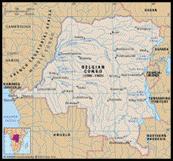
O
ffice to Khartoum Egypt, then to Alexandria, or 2) taken by courier to Redjaf on the west bank of the Nile, and loaded on a Egyptian boat going north, where it received the Retta transit mark boat in Khartoum (Figure 29). The purpose of the Retta was to cancel any stamp that had not been canceled at the point of origin, including non-Egyptian stamps that were loaded on board a ship heading to an Egyptian port.
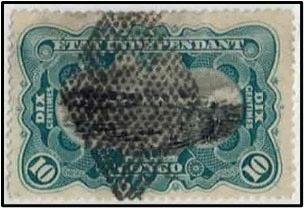
When part of the journey was in Congolese territory with carriage by the CFS, franking could not consist of Sudanese stamps exclusively, but acceptable with mixed franking. Lado markings and postal history are considered scarce. There were two primary routes to and from the Lado Enclave.
The Congo Route. Mail usually traveled westward – at first to Ibemo on foot and by canoe and took about two months. However, new post offices at the end of 1899 opened, and mail started flowing with routing to Boma via Dungu, Buta, Ibemo, Bumba and Leopoldville (Figure 30).
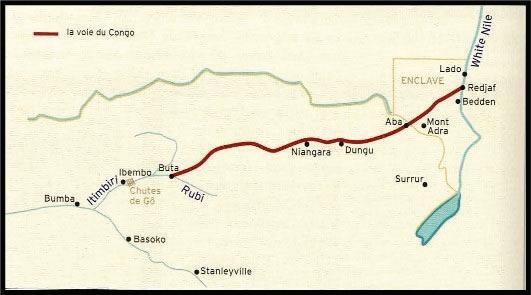
The White Nile Route. This route (Figure 31), referred to earlier, was opened about May of 1900 and had a twofold advantage over the Congo Route – it was significantly faster and less expensive, going north through the Sudan by a travel post office. For example, a delivery from Ibemo to Boma took 47 days, and then to Brussels another 27 days. In comparison, a letter sent from the Lado Enclave via the Nile would reach its destination in just three weeks. The Congo tariff was 2¢ for a letter and 15¢ for a postal card, against the Universal Postal Union (UPU) tariff in the Sudan (Figure 32) of 25¢ and 10¢ respectively.
A third route through Uganda existed, but was rarely used by agents of the Congo.
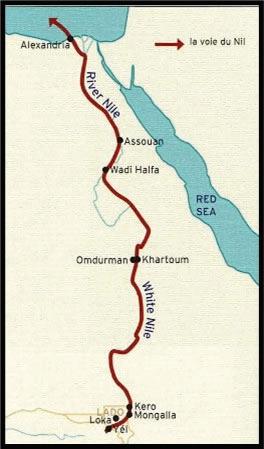
The Missionary Influence on the Postal System. Between 1853 and 1856, Scottish missionary David Livingstone completed a coast-to-coast journey across the African continent. After returning to Africa (and not lost, as many suspected), he was found in 1871 by Henry Stanley who was seeking the origin of the Congo River. During the period of 1892-96, European and American missionary organizations started flourishing (Figure 33) and they relied heavily on the postal system (Figure 34) for communication back and forth with their parent organizations and families back home.
The growing missionary population and increasing number of missionary stations increased the volume of mail flowing back and forth between the CFS and Europe and this, along with mineral exploration in the southeastern CFS, pushed the development of new mail routes and a need for faster delivery of mail.
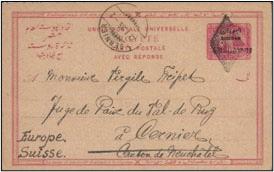
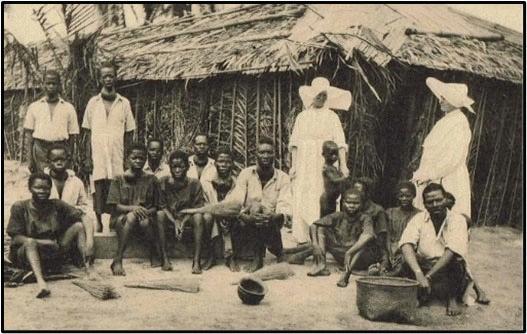
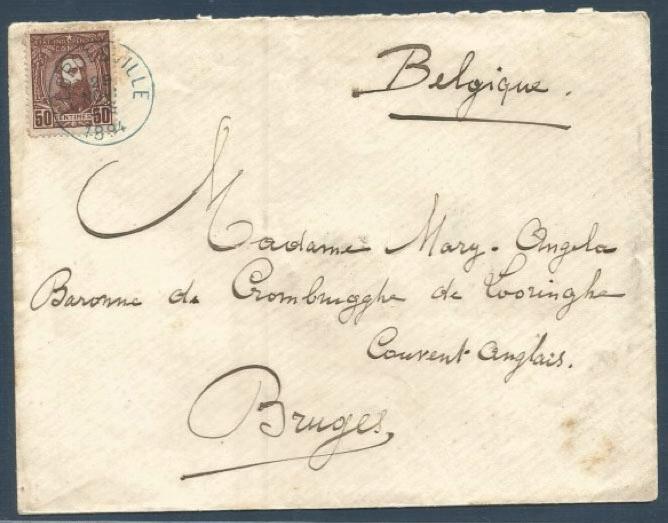
The postal system was now gathering steam, catalyzed by the exploration and mining of Katanga’s commerce region rich in copper, tin and cobalt (Leopold’s dream come true).
Postal Stations. Six new offices opened.
22. Banzyville – Jan. 25,1898
23. Bena-Bendi – June 16, 1898
24. Stanleyville – July 15, 1898
25. Luali – July 30, 1898
26. Libenge – Sept. 15, 1898
27. Umangi – Aug. 2, 1899
Postal Rates. Starting on March 1, 1889, domestic postal cards were 10¢, and those with a reply card attached were 10¢/15¢. The foreign counterparts were 15¢, and 15¢/25¢. Starting on April 1, 1896, internal letters needed 15¢. And, starting on Jan. 1, 1897, internal reply cards needed 10¢ and foreign reply cards needed 15¢. Note: The reason the postal history throughout the CFS period is dominated by postal stationery is due to the rate difference between postal stationery (15¢) and letters (50¢) (Figure 35).
Stamps. In 1898, it was found necessary to complete the Mols issues by the introduction of the two high-value stamps – the 3.5 Fr. and the 10 Fr., printed by Waterlow Bros & Layton of London (Figures 36a and 36b). The 3.5 Fr. value was intended for the sending of parcel post, and the 10 Fr. value was primarily for telegrams and gun licenses.

Postal Cards. Six new postal cards were issued in 1897, all using the palm tree image (Figure 37). Postal card use grew to 26,853 in 1899.
Telegraphic Cancellations. The first CFS telegraph station was in Gongolo on Sept. 9, 1897, followed by Boma, Leopoldville (later named Kinshasha), Matadi and Tumba on May 1, 1899, all using handstamp cancellations.
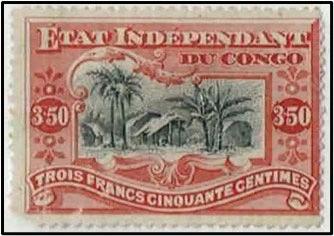

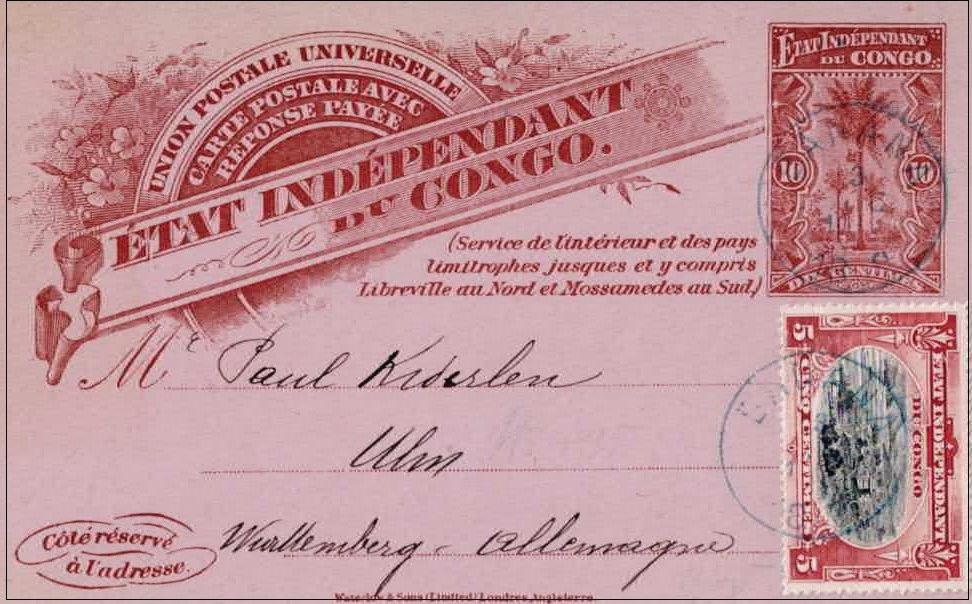
Sixteen of the 46 CFS post offices were also telegraph offices from 1895 to 1908. Postage stamps to the value of the cost of the telegram were affixed to the telegram form on which the message was written. The stamps were canceled with the telegraphic date stamp (Figure 38). Three types of telegraphic octagon cancelers were used during the CFS.
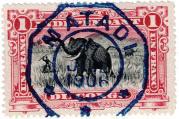
Mail Movement/Routes. Until mid-1898, mail in the CFS was moved by runners, canoes, caravans and river boats. Stanley once said, “without a railway from Leopoldville to Matadi, the Belgian Congo (to circumvent the unnavigable stretch of the Congo River) is not worth a red cent.”
There were four railways started and two completed during the CFS (Figure 39); all carried mail.
1. Chemin de fer Congo. This railway linked Leopoldville to Matadi and was started in 1892, through rough terrain and conditions, and completed in 1898. During its building, 1,932 people died from disease and exhaustion.
During construction of the railroad, Matadi used a Tumba Poste cancellation
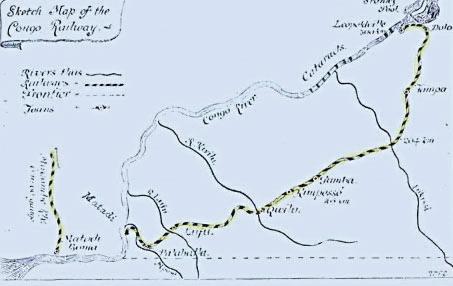

is the first cancellation of the post office and was used during the construction of the “Matadi - Leopoldville” railway of which it was part. One stamp is missing.
(Figure 40). Formerly, letters arriving at Matadi took a month to reach Leopoldville, but with rail, it took just two days.
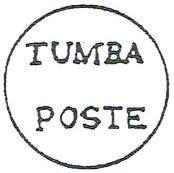

2. Chemin de fer Mayombe Railway. Started in 1899, this railway linked Boma northward with Luki (1900), Lukula (1901) and eventually to Tshela (140 km from Boma) in 1912. It allowed commerce and mail to flow from the interior to Boma, then to the port at Banana. Mail posted at a railway station used a “Gare” cancellation (Figure 41).
3. Chemin de fer du Congo & Katanga. Started in 1906, this railway linked the Port of Bukakma (Southern CFS) on the navigable section of the Lualaba River through the important mining region and to Elisabethville, then to Sakania, where it eventually connected to the Rhodesian railway network in 1910. Mailing to and from this commerce region was critical to making King Leopold’s dreams come true.
4. Compagnie du Chemin de fer du Congo Supérieur aux Grands Lacs Africains. Started in 1903 and finished in 1906, the railway connected Stanleyville in the east with Ponthierville (Ubundu), a distance of 75 miles. This linked the navigable section of the Congo River near Stanleyville and the navigable section of the Lualaba River.
Once railways were developed, mail moved along those routes provided a dynamic shift on how mail was delivered. Surprisingly, there seems to be no information about how the mail was handled on the trains. Also
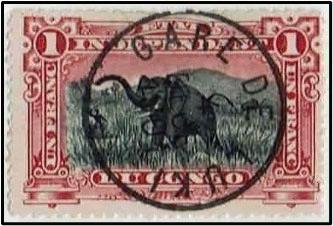
missing – how railroad stations could cancel stamps. There were no transit marks on mail carried by trains.
Railroads were being built, commerce was booming and colonization was in full swing, therefore there was a need for more post offices in the interior.
New Postal Stations. Seven new postal stations opened from 1900-05.
28. Basongo – June 1, 1901
29. Pweto – July 8, 1902
30. Banza-Boma – Nov. 29, 1902
31. Chutes Francois-Joseph – July 15, 1904
32. Lisala – Jan. 1, 1905
33. Basankusu – Feb. 1, 1905
34. Thysville – Oct. 15, 1905
Postal Rates. Rates remained the same through the end of the CFS (1908).
Stamps and Postal Cards. No new stamps were issued during this period, but there were three new postal cards, all using the Mols palm tree. In 1900, three new postal cards for domestic use were issued. From 1900 to 1905, postal card use rose to 201,317.
Mail Movement. By 1905, mail was carried on two completed railroads, and mail started to be delivered to stops already completed on the two other railroads under construction. Thus, mail between cities and villages along these railroads was moving much faster.
No new stamps or postal cards were issued during this fi nal period of the CFS. Between 1906 and 1908, 202,130 postal cards were used. Postal rates were unchanged.
New Postal Stations. Eleven new post offices (Figure 42). The new ones are colored red. Of note is a post office in Beni in the Ituri Forest of the Bambuti Pigmies. Previously, according to Wach, there was no settled government or even a hereditary chief.
35. Inongo – Jan. 1, 1906
36. Uriva – Jan. 1, 1906
37. Beni – Jan. 1, 1906 (Figure 43)
38. Irebu – Feb. 2, 1906
39. Buta – Sept. 15, 1907
40. Dungu – July 1, 1908
41. Lukafu – July 1, 1908
www.collectorsclub.org July-August 2025
42. Musofi – July 1, 1908
43. Pania-Mutombo – July 1, 1908
44. Avakubi – Aug. 1, 1908
45. Kinshasha – Dec. 1, 1908
Postage Due Cancellation During the CFS. The Belgian Congo did not introduce postage due stamps until 1929. So, during the colonial period (1886-1908), the Type 1 “T” marking showed the receiving post office the package or letter was underfranked.
The use of postage stamps overprinted with “T,” “Taxe” or “Taxes” was authorized for paying postage due in a government circular dated Oct. 31, 1906. The legitimate cancellation (not an overprint) was applied after the stamp had been affixed to the package, letter or stamp (Figure 44) and used to extract postage. There were five main types used, including the T.
Mail Movement. Though railroads were built, mail was still being carried by runners and caravans to outlying villages. Riverboats were still important.
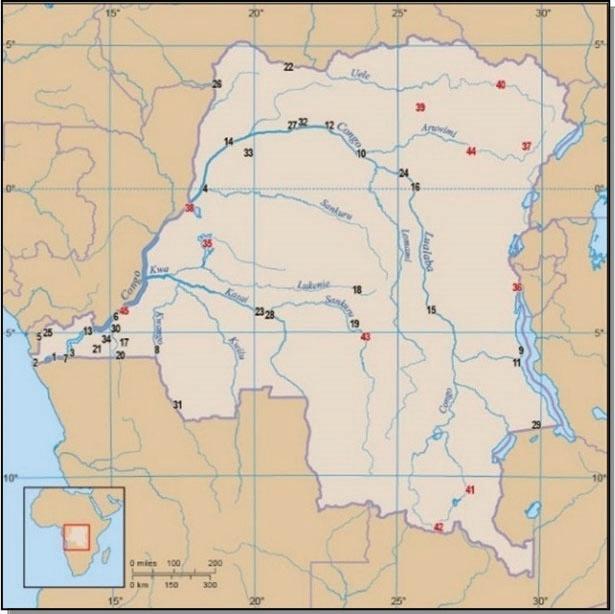
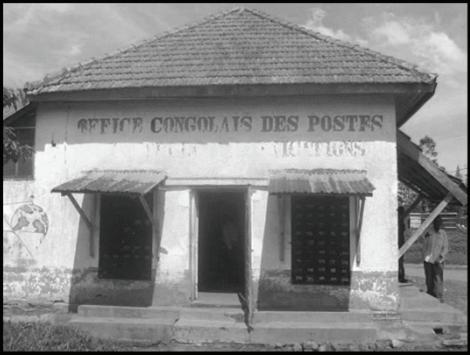
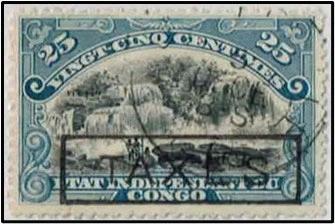
The Berlin Conference of 1884-85 established the CFS and King Leopold II as its sovereign, based on three promises: 1) safeguard free trade, 2) do away with the slave trade and 3) never request funding for his personal “project.” Did his stated motive, “To bring civilization to the Congo people” happen? Yes, but not in an effective way. His real motive was obtaining ivory, gold, rubber and cobalt, and the natives suffered immeasurably from it. History shows the ultimate reason for the demise of Leopold and the CFS was the brutal treatment of the indigenous population (Figures 45 and 46) that disgusted people in Belgium and many parts of Europe and the rest of the world. As a result of the outrage of the violence brought into the CFS by Leopold II, Belgium annexed the CFS as the Belgian Congo (Figures 47 and 48).
However, the CFS postal system was successful and left intact after annexation, then eventually evolved as the Belgian Congo postal system. CFS stamps marked as “Etat Independent” were valid until July 30, 1909. Many were overprinted in black with “Congo Belge” until new stamps could be printed.
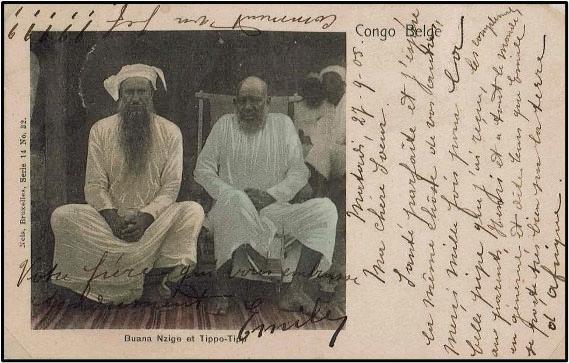
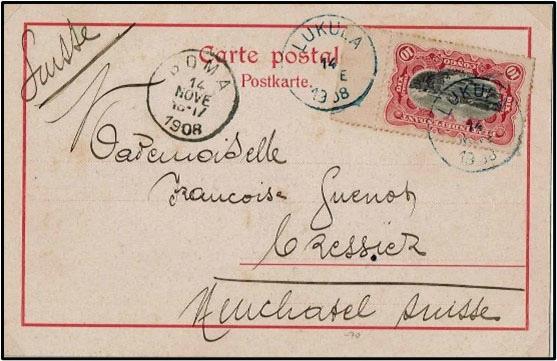

King Leopold II died on Dec. 17, 1909, and the Belgian crown passed to Albert I, the son of Leopold’s brother, Philippe, Count of Flanders. His funeral cortege was booed by the crowd in expression of disapproval of his rule.
Switzerland, posted on the day before the last day of the Congo Free State (Nov. 15, 1908).
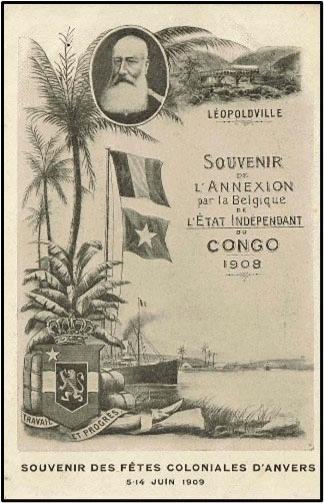
The development of the postal system in the CFS was the first step in establishing the infrastructure so desired by King Leopold II. It took 23 years to fully develop into a viable postal system. During that time, the CFS postal system:
• Issued 30 different stamps, four different parcel post stamps and 19 different postal cards.
• Opened 46 postal stations.
• Used dugout canoes, runners, caravans and, eventually, trains to deliver the mail.
• In its first year, 880 items were posted internally and 33,000 internationally.
• In its last year, 188,572 items were posted internally and 680,331 internationally.
• Developed the infrastructure to improve civilization.
Bibliography
1. International Association of Congo. Wikipedia, accessed Dec. 30, 2024.
2. Maselis P., “The Portuguese Post Office in Banana,” Belgian Congo Study Circle Bulletin, 138:10-14 (March) 2006.
3. Maselis P. “The Hertwig and Manduau Labels – 1883-1884,” The Belgian Congo Study Circle Bulletin, 153;7-11 (December) 2009, and 154:11-13 (April) 2010.
4. Numerous other issues of the The Belgian Congo Study Circle Bulletin, February 1951 to December 2024.
5. Grant K., The CFS and the New Imperialism. A Brief History with Documents, The Deford Series in History and Culture, New York, 2017.
6. Heim, AI, and Keach, RH., The Cancellations of the Normal Post Offices of the Belgian Congo 1886-1960, Third Edition, January 2004, The Belgian Congo Study Circle.
7. Fullerton, W.Y., The Christ of the Congo River, The Carey Press, July 1928.
8. Moneheur B., “Conditions in the CFS,” The North American Review, 1904; 179(575): 494-503, University of Northern Iowa.
9. Pendleton S., “Stamps of the CFS,” Scott Stamp Monthly, 2005 (May) Vol. 23, No. 5, pp. 38-39.
10. Stanley, H.M., In the Darkest Africa, J.J. Little & Co., New York, 1890.
11. Conan-Doyle, Sir Arthur, The Crime of Congo, Hutchinson & Co., 1909.
12. Wack, H.W., The Story of the Congo Free State; Social, Political, and Economic Aspects of the Belgian System of Government in Central Africa, G.P. Putnam’s Sons (New York, London), 1905.
13. Gudenkauf, A., Belgian Congo: The Lado Enclave and Cancellations on Mail Sent Via Congo and Nile Rivers, The Belgian Congo Study Circle, 1986.
14. Gudenkauf, A., Postal History of the Lado Enclave 1897-1910, the Belgian Congo Study Circle, Philip Cockrill, 1986.
236 www.collectorsclub.org July-August 2025
James R. Taylor
On May 25, 1940, the Belgian Congo administration declared loyalty to the Belgian Government in Exile in London and joined the Allies’ war effort. The line-engraved Belgian Congo pictorial “ethnic” stamp series,1 which was then current, remained valid for postage until Aug. 31, 1942, when the issue was demonetized, but that didn’t keep an industrious stamp dealer from creating bogus surcharges on existing stocks of the stamps.
When he learned of United States troops being stationed in the Belgian Congo, A. Liège, a Belgium stamp dealer, overprinted stamps, Scott 144, 146-148, 150 (five values) with unauthorized overprints and surcharged with new values, with “DETATCHMENT [sic] / U.S.A. / AIR MAIL.” The original values were obliterated, and new values were surcharged in United States cents, ranging from 15¢ to 50¢ (Figures 1-5).
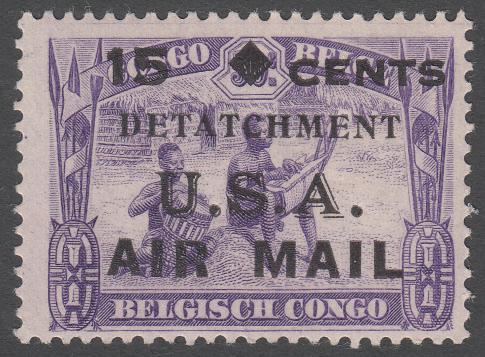
Note the “Detatchment” spelling error for Detachment.2,3 The issue was completely bogus, as the U.S. troops enjoyed free postage, and their military post office accompanied them. American troops arrived at Matadi, Belgian Congo, on Aug. 29, 1942, just two days before the stamps were demonetized. It is likely the surcharges were added after the stamps were no longer valid for postage.

But there is much about the background of this particular deployment that is interesting. The United States “Air Transport Command” militarized civilian, military and official mail and resources to and from Africa and Asia.4 A United States Army unit composed of African American soldiers with white officers was ordered to the Belgian Congo.


During the tumultuous years of World War II, the Belgian Congo emerged as a crucial strategic asset for the Allied forces. The region’s rich natural resources and pivotal geographical location made supporting the war effort indispensable. One significant chapter in this history involves the deployment of United States troops to this African territory, particularly the unique Company C of the 12th Quartermaster Truck Regiment. The remainder of this article examines the role and significance of those U.S. troops, the operations of the Air Transport Command, and the unique composition of Company C.
As mentioned, the Belgian Congo, as a colony rich in natural resources, such as rubber, copper and uranium, was strategically important during World War II. The Allies recognized the necessity of securing and utilizing these resources to support their military operations. The region’s geographical location also made it an ideal base for establishing transAfrican air ferry routes that would facilitate the movement of aircraft and supplies between the United States and Europe.
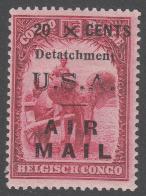
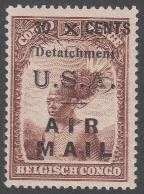
The United States Air Transport Command (ATC) played an essential role in ensuring the efficient transportation of military, civilian and official mail to and from Africa and Asia. The ATC was responsible for militarizing and managing these critical communication and supply lines, which were essential for maintaining the flow of information and resources during the war. The ATC ensured the Allies could continue their operations with minimal disruption by establishing and operating air ferry routes that skirted the active war zones in Europe and North Africa. The bogus stamps featured here were supposedly created for use by the ATC.
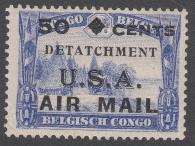
Amidst this backdrop, Company C of the 12th Quartermaster Truck Regiment was deployed to the Belgian Congo. This unit was tasked with constructing and operating the southern trans-African air ferry routes. These routes were crucial for connecting the United States and Europe, allowing for the swift movement of aircraft and supplies to support the war effort, while skirting the active war
238 www.collectorsclub.org July-August 2025
zones in Europe and North Africa. The deployment of Company C to the Belgian Congo underscored the region’s strategic importance and the Allies’ commitment to maximizing its potential. Company C’s primary responsibilities included constructing and maintaining airstrips, transportation routes and supply depots.
One of the most notable aspects of Company C was its unique composition. The unit was composed of African-American soldiers under the command of white officers, reflecting the segregated nature of the U.S. military during that era. Company C soldiers demonstrated exceptional dedication and resilience in fulfilling their duties despite segregation’s challenges.
African-American soldiers, who had long faced discrimination and limited opportunities, were given the chance to contribute signi fi cantly to the war effort. The unit’s leadership (commanding o ffi cers), however, remained predominantly white, which was a re fl ection of the broader racial dynamics within the military, where African-American soldiers often served under white o ffi cers.
The Belgian Government in Exile and the local Congo colonial administration protested the deployment of African-American troops by the United States Army. The local Congo regime practiced strict apartheid (racial segregation), which barred native Black Africans from restaurants and other local services. These disgraceful local regulations and the lack of privileges generated morale problems. 3
A personal survey by the U.S. commander of possibly moving the unit to Pointe Noire, across the river in neighboring French Equatorial Africa, was being considered. He found the colonial policy there to be no better. The company was finally transferred to more hospitable Liberia.3
The contributions of Company C to the Allied war effort in the Belgian Congo were significant. By ensuring the smooth operation of trans-African air ferry routes, the unit played a crucial role in maintaining the flow of aircraft and supplies vital for the success of military operations in Europe. The efforts of Company C also highlighted the broader contributions of African-American soldiers during World War II, a narrative that has often been overlooked in historical accounts.

The soldiers of Company C faced numerous challenges, including the harsh environmental conditions of the African continent and the systemic racism that permeated the U.S. military. Despite these obstacles, they constructed and operated a critical logistical network for the Allied war effort. Their achievements serve as a testament to their resilience and determination.
The deployment of Company C to the Belgian Congo also serves as a reminder of the broader contributions of African-American soldiers during World War II. Despite facing segregation and discrimination, these soldiers played a vital role in supporting the Allied victory. Their service and sacrifices deserve recognition and appreciation in the annals of history.
The deployment of United States troops to the Belgian Congo during World War II, particularly the unique Company C of the 12th Quartermaster Truck Regiment, is a significant, but often overlooked, chapter in the history of the war. The strategic importance of the Belgian Congo, the operations of the Air Transport Command, and the contributions of Company C underscore the multifaceted nature of the Allied war effort. By acknowledging and honoring the contributions of these soldiers, we gain a deeper understanding of the complexities and sacrifices involved in securing victory during one of the most trying times. The bogus stamps, of course, provide an interesting interlude to this story.
References
1. Keech, R.H., 1980, “The 1931 ‘Paysage’ Issue,” Belgian Congo Study Circle Newsle er, No. 37, p. 11.
2. Foden, P.S., 1988, “The S ckney machine issues of the Belgian Congo, The Congo defini ve issue 1931-1937,” Belgian Congo Study Circle Newsle er, No. 58, pp. 5-18.
3. Conn. S., 1965, chief historian and editor h ps://history.army.mil/books/wwii/11-4/chapter15.htm#b4 (now a dead link, accessed June 9, 2022).
4. Cro y, D. and Lawrence, L., 2019, “From the Fast Lane to the Slow Lane: Two interes ng World War II Trans-Atlan c Air Mail Covers from Liberia,” American Philatelist, Vol. 133, No. 3, whole 1,418.

www.collectorsclub.org July-August 2025
Steve Bonowski
There are any number of reference works that provide information about stamps, how to collect them and how to handle stamps properly. One is Fundamentals of Philately by L.N. and M. Williams, available from the American Philatelic Society. The APS also offers an inexpensive beginner’s kit. I recently picked up a nice used copy of Foundations of Philately, by Winthrop S. Boggs and published by the Philatelic Foundation. Other references are available from the American Philatelic Research Library (APRL) in Pennsylvania, the library of the Collectors Club, the Rocky Mountain Philatelic Library in Denver and others.
One can also find magnificent worldwide collections that are viewable online. Two that immediately come to mind are those of Doctor Cheng Chang and Antoninus Ra/Mitch Seymour (the latter isn’t currently accessible).
But I don’t recall ever seeing a definition of beginner collector, intermediate collector and specialist collector. Perhaps such definitions do not exist. Or, as the late Supreme Court Justice Potter Stewart once said about naughty pictures and writings, “I can’t define it, but I know it when I see it.”
An advisor for this article, Matthew Healey from the APS Writers Unit No. 30, suggested framing the discussion based in my own philatelic experiences. That I can do, as a lead-in to the general discussion. Like many other Boomers, I was introduced to the hobby by my father, which happened at age 10 in April 1960. I immediately got into the “fill-those-spaces” routine using my dad’s Scott Modern Postage Stamp Album, the red one published in 1940. An 8th grade graduation present was the H.E. Harris Senior Statesman album.

After college graduation in 1971, and getting that first job, I had more money to spend than the typical lower earnings from college jobs. Dad introduced me to Linn’s Stamp News by gifting me my first year. I also learned about the APS, joining to stay in February 1974. Back then, both publications were full of mail auctions and dealer ads, which led me to a “philatelic overdose.”
I accepted a job offer in spring 1981 here in Colorado, where I remain. I added to the “fill-those-spaces” routine about 1984 when I purchased Parts I through V (1840-1965) of the Scott big blue InternationalStamp Album, complete with binders, end sheets, blank pages and glassine interleaves. I bought more and larger worldwide collections to fill all those new spaces. Figure 1 shows an example of how I did “fill-those-spaces” by mounting stamps in numerical order. As an aside, Scott finally listed these Ceres stamps with separate numbers for perforations and commonly used papers a few years ago.

Purchase of several Portuguese colony sets in early 1988 from a long-defunct California auction house introduced me to color shading and even some printing plate flaws. A beginner collector may view the Figure 2 stamps and see a bunch of duplicates. An intermediate collector will see several stamps with color shades.


Another example of “intermediacy” can be seen in the Kenya, Uganda, Tanganyika stamps in Figure 3, with the changes in the backgrounds of mountains and the water. The stamp with the better impressions is from a retouched printing plate.

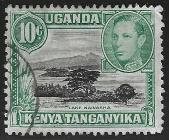
Sometime during the mid-2000s, I finally “hit the jackpot” and achieved “specialist status,” at least with Portuguese colonies. I started to look more at printing plate flaws and began to consider concepts such as printing errors, proofs, forgeries, cancels and, eventually, postal history. Figure 4 shows some of the then newly acquired knowledge, with four Ceres stamps and one from K.U.T. with the known plate variety where the rope does not touch the sail.

b. Mozambique Ceres with broken “M” creating the country “name” of Xocambique.
b. Angola Ceres with perforation “difficulty.”
d. India Ceres with inverted ioverprints.
e. K.U.T. Scott 79b with rope not attached to sail variety.
In conclusion, then, we can state that a beginner collector is one who fills spaces on album pages. An intermediate collector begins to recognize things like colors, perforation and maybe papers. A specialist covers all these areas and much, much more. The end. Or is it? Any exceptions?
But wait, there is more! Maybe remembering old late night TV mantras for stuff like the “Magic Dicer” that slices up your veggies, carves your Thanksgiving turkey and rotates your car tires. ...
The worldwide collection of Dr. Cheng Chang is now at 108 Scott binders and counting, plus a couple dozen stock books (see link in Acknowledgements). The collector’s goal here is to collect 90% of the world’s stamps at least through
the mid-1990s. It’s definitely a “fill-the-spaces” effort. But is it really a beginner collection done by a beginner? Gentle readers are invited to review the link and decide for yourself.
Second, what is the impact of higher-value stamps on a basic fill-the-spaces collection? My Canada collection, from around 1860 to 1973 has been a “fill-thespaces” collection, but not necessarily a beginner collection. How would one rate a collection with high values such as those shown in Figure 5?
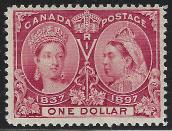

Third, most collectors have a variety of collections of differing values and content hanging around the house. Just because a collector is a specialist in one area will not also make an average, on-the-side collection into a specialist collection. One needs a bit of common sense. I’m no longer a worldwide collector, having downsized greatly in recent years. My current primary collecting specialties are Portuguese colonies, Poland, Mexico and British East Africa. I’m at a self-determined specialist level for the four. But my other retained collections for places such as Portugal itself, Germany and Paraguay remain as “fill-the-spaces” collections, perhaps at a semi-beginner level at best.
Hopefully you will note a key sentence in the preceding paragraph about being a “self-determined specialist.” There is no “specialist academy” to graduate from, nor somebody out there in the philatelic world who will certify one as being a “specialist.”
So, a more realistic answer as to what is a beginner collector, what is an intermediate collector or what is a specialist may lie in the opposite extremes of the spectrum. Beginner collections are often seen in the “What’s in Your Attic?” booths at some of the major stamp shows, perhaps others. These are collections that often have great sentimental value for families, but only limited financial value. A beginner may be a person who collected just for the love of collecting and never intended to amass a fortune or never considered being a philatelic investor.
At the other end of the spectrum is the exhibitor, philatelic author or investor. Yes, the common mantra is to never treat philatelic items as an investment (unless one has a budget comparable to Bill Gross). So, a focus can be on the exhibitor. In exhibiting, it is also possible to gather materials for high award-winning exhibits without spending a lot of money. But an exhibitor is generally accepted as being a specialist in the area being exhibited.
244 www.collectorsclub.org July-August 2025
Likewise, most philatelic authors are more or less experts in the field(s) they happen to be writing about, unless one is writing a more generic article like this one. But one still finds elements of specialization here.
But, but, cough, but, sputter, but ... what did you do with all the intermediate collectors? The answer is they’re still here. Imagine the spectrum of collectors for a moment. At the beginner end might be 30% of collectors. At the other end, maybe 20% of collectors. One will find the intermediates near the middle of the remaining 50%, if that makes sense. On either side approaching the ends can be found collectors who are “variations on a theme” of that end.
So, this article is my current opinion. It’s subject to change as newer information comes in as long as one remembers the huge caveat: the de-centralization of organized philately during the past 20 years driven by the Internet. That, however, is a topic for another time ...
I’m happy to answer questions and can be reached through the editor.
Acknowledgements
(Bri sh) East Africa catalog, Stanley Gibbons, 2nd edi on, 2010, London.
Mundifil catalog of former Portuguese colonies, 2019 edi on, editor J. Miranda da Mota, Lisbon & Porto.
Os Selos das Colonias Portuguesas, J. Miranda da Mota, Nucleo Filatelico do Ateneu Comercial do Porto, 2015 (defini ve guidebook for the colonial Ceres issues, including prin ng figures and flaws).
Sco 1840-1940 Classic Specialized Catalog (2024). Worldstampalbum.com/main.aspx (Dr. Cheng Chang)
website?

Michael L. Wilson
As most postal historians will know, the first regularly scheduled, official airmail flight in the United States took place May 15, 1918, on a route between Washington, D.C.; Philadelphia, Pa.; and New York City.
But did you know that day also marked the beginning of collectible “interrupted” or “crash” mail from official U.S. airmail flights? Indeed, U.S. Army Lt. George Boyle – the first pilot who took off that day from Washington, D.C., with more than 6,600 letters bound for Philadelphia and places beyond – got lost, ran low on fuel and ended up crashing about 25 miles from the nation’s capital. Boyle was unhurt – other than his pride, I’m sure – and the mail was recovered and dispatched the following day.
Despite that inauspicious start, airmail would become hugely successful, thanks, in large measure, to the daring of the Army and civilian pilots who flew it. It took nerves of steel to be an airmail pilot in the early days. It was one of the most dangerous professions in the 1920s. Pilots flew mail in planes with open cockpits and without parachutes, weather reports, wing de-icers or radio guides. No wonder the life expectancy of early airmail pilots was as short as 900 flying hours.
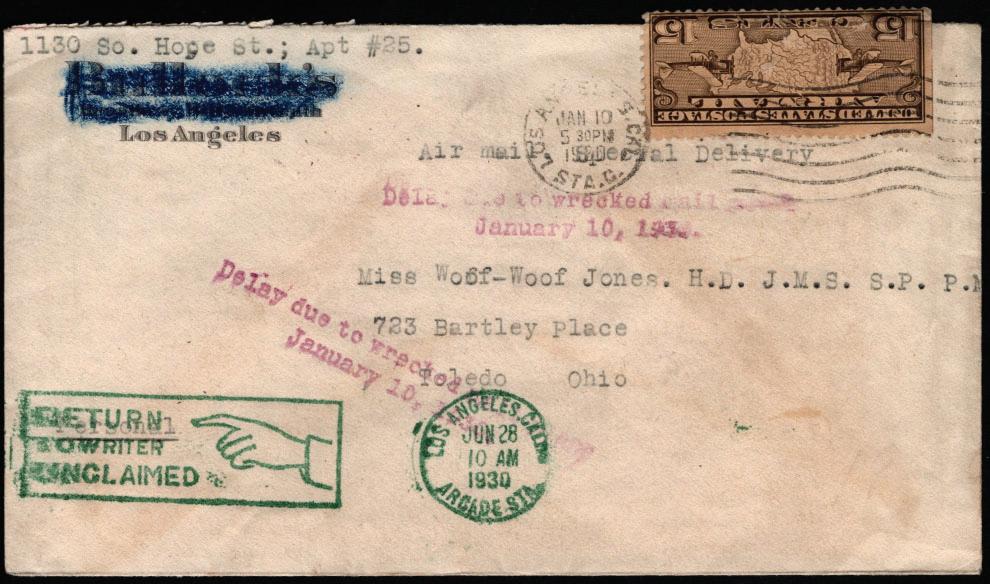
Source: Author’s collection.
When airmail planes crashed, the U.S. Post Office Department (USPOD) placed a priority on salvaging the mail so that it could continue its journey. Officials expressed concern about injuries suffered by pilots and mourned those who died, but it was the mail that mattered the most. Thus, a legacy of those daredevil days of airmail is a plethora of crash and wreck mail with fascinating and often sobering tales to collect and study. The cover shown in Figure 1 is a case in point.
Its journey started Jan. 10, 1930, in Los Angeles, Calif. Who sent it is not clear, but my guess is that the sender was a male, given the recipient was a “Miss Woof-Woof Jones,” who had several designations – “H.D. J.M.S. S.P. P.M.” – none of which was likely of the professional variety like “C.P.A.” or “J.D.” I only wish I knew what they stood for!
Based on the address, “Miss Woof-Woof Jones” was 18-year-old Grace E. Jones of Toledo, Ohio (Figure 2). At the time, she lived with her parents and worked as a telephone company operator, a job that has gone the way of buggy whip makers and airmail.

The sender lived in an apartment called “The Fra” located at 1130 S. Hope Street. When it opened in 1909, the Los Angeles Herald described it as “one of the most luxuriously appointed houses in the city.” Today the location is a parking lot, so while luxurious in the early 1900s, it clearly was not worth preserving as a historic landmark. Los Angeles city directories from the era list “The Fra” but don’t provide information on the apartment’s tenants.
The sender likely worked for – or perhaps pilfered an envelope from – Bullock’s, a one-stop department store headquartered in Los Angeles from 1907 through 1995, when it was merged into Macy’s (Figure 3). The return address is scratched out, but using a tool called “Postmark Reveal,” you can make out not only “Bullock’s” but the address “Broadway, Hill and Seventh.”
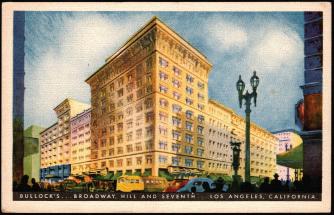
The sender paid a handsome 15¢ to send this letter. That not only covered the airmail rate at the time (5¢ for the first ounce), but also the special delivery surcharge of 10¢. Whatever the sender had to say to “Miss Woof-Woof Jones,” it must have been mighty important.
The weather in southern California had been mild the first part of January 1930, but by the time this cover entered the mail stream, temperatures had dropped into the upper 40s with heavy rain. The weather was similarly unpleasant in Las Vegas, Nev., and Salt Lake City, Utah, the two stops this cover would have to make on its way to Toledo. In fact, Las Vegas experienced a rare snowstorm, much to the delight of school children in “Sin City” (Figure 4).

It was into that stormy weather that Western Air Express airmail pilot Maurice Graham (Figure 5) took off from Los Angeles just before 7 p.m. on Jan. 10 in his Boeing Model 95 (Figure 6) with tail number “NC-420E” to fly 691 pounds of mail and negotiable securities along what was known as “Contract Air Mail (CAM) Route 4.”
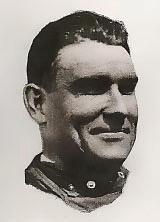

248
www.collectorsclub.org July-August 2025
Graham was an experienced pilot. He flew for the U.S. Army Air Service in World War I and was credited with finding the “Lost Battalion,” a group of about 550 U.S. soldiers isolated by German forces in the Argonne Forest in October 1918. He worked at various jobs after the war but never lost his enthusiasm for aviation.
Graham was one of the first pilots hired by Western Air Express after it won the contract to fly mail from Los Angeles to Salt Lake City via Las Vegas. Graham flew the first eastbound mail on CAM 4 on April 17, 1927, and by the time he took off on Jan. 10, 1930, he had flown that route hundreds of times without an accident, forced landing or loss of a single ounce of mail. Remarkably, he had never been late.
Graham made it to Las Vegas later that evening, where he met fellow Western Air Express pilot Charles James. James had just arrived in Las Vegas from Salt Lake City on the westbound leg of CAM 4 and warned Graham of the blizzard conditions between the two cities.
Despite James’s warning, at 10:10 p.m., Graham took off for Salt Lake City. The mail had to get through. He and the mail never arrived.
Western Air Express immediately launched a search to find Graham. The search party would eventually number in the hundreds, and the USPOD offered a $500 award to anyone finding the plane. Initially, most thought the 34-yearold pilot was safe, having landed short of Salt Lake City to take shelter from the storm. Reports in early February of seeing a “mysterious column of smoke” in the vicinity of where it was thought Graham landed raised hopes that he was alive. There was even a rumor circulating in early June that he had been found working as an auto mechanic in Oklahoma.
The search was stymied by the more than eight feet of snow that covered the area, and the searchers conceded that they would have to wait for the spring melt to find Graham and his plane. It wasn’t until June 24, 1930, that Graham’s plane was found near Cedar City, Utah, about 170 miles northeast of Las Vegas and 250 miles south of Salt Lake City (Figure 7). The mail bags were found securely locked up in the plane, but there was no sign of Graham nor of the negotiable securities he was carrying (Figure 8). Nevertheless, back in Los Angeles, his wife, Alice, and twin children Monte and Melodie, held on to hope that he was still alive.
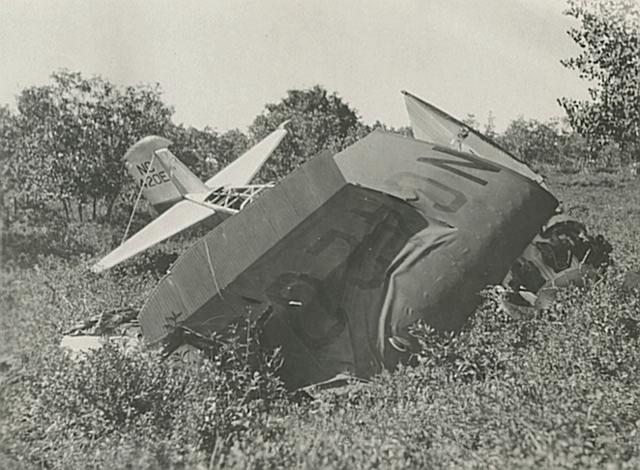
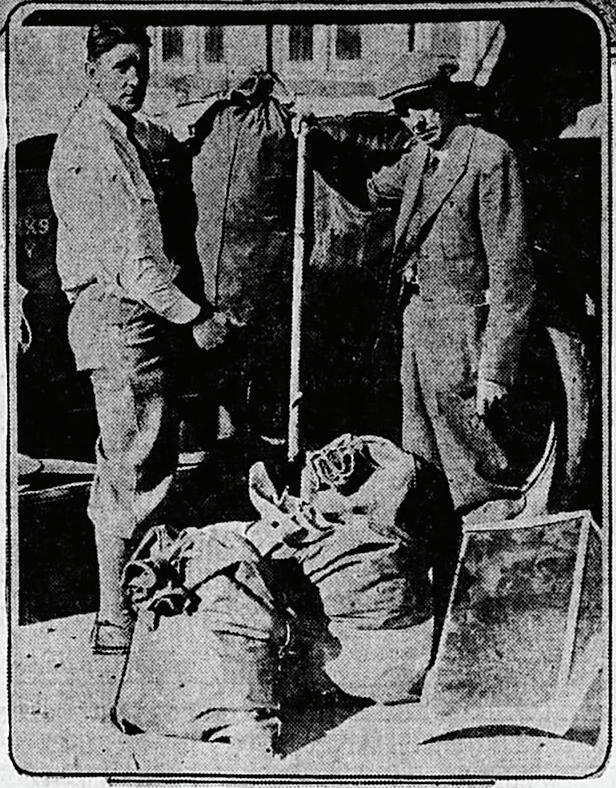
Finally, on July 16, Graham’s body was found about six miles from the plane. He had a slight skull fracture, which he might have received when landing his plane, but the cause of death was from exposure to the intense cold that lasted for three days after the crash. Ever the pilot, Graham’s last entry in his log was, “January 11, 1930. Arrived 2:35 AM. No destination.” He had taken the negotiable securities with him after the crash, and they were found clutched under his arm. Graham was cremated, and his ashes were dispersed along the air mail route that he frequently flew.
All the mail he carried was salvaged. It received the cachet “Delay due to wrecked mail plane/January 10, 1930” and was machine canceled “RETURN/TO WRITER/UNCLAIMED” and dated June 28, 1930. Making good on its promise, the USPOD awarded $500 each to two sheepherders – Ward Mortensen and Elburn Horton – for finding the plane and safeguarding the mail.
Whether “Miss Woof-Woof Jones” ever received another missive from the mystery writer in Los Angeles is unknown. If she didn’t, it would not be because the airmail service failed her. As the San Bernadino County Sun said on July 18, 1930, “No more dramatic chapter has been written in the history of the airmail than this sacrifice on the part of a devoted pilot, who faced death in the storm to carry the mail through.”
Michael L. Wilson primarily collects postal history and enjoys delving into not only the postal histories but the social histories of covers in his collection. He is affiliated with multiple organizations, including the American Philatelic Society and the Collectors Club. He edits The Philly Philatelist and manages the website for the Greater Philadelphia Stamp and Collectors Club. He can be contacted by email at: mwilson34407@gmail.com
250 www.collectorsclub.org July-August 2025
Robert Gray
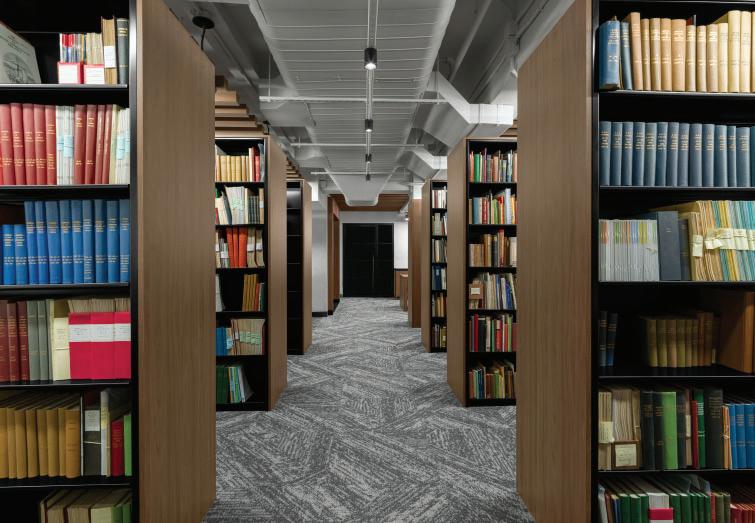
We are very excited to announce that the hundreds of journal titles held at the Collectors Club Library now appear in the David Straight Memorial Philatelic Union Catalog. It is now easier than ever to learn if the CCL has the journal you want. Just go to the APRL website (https://stamps.org/services/library) and look for the search box. Type in the name of the journal and you will see all the Philatelic Union libraries that hold that journal including the CCL.
The CCL has two physical sets of the Collectors Club Philatelist. In one set the 1937 volume was missing for a very long time. It is especially appreciated, therefore, that Collectors Club member, Joe Crosby of Oklahoma City, donated his copy of the journal for that year. Our sets are now complete.
There is good news regarding our auction catalog collection. All the named auctions and the country-specific ones have been placed on high-density shelves sorted by the auction company name. They join the archive boxed collection of historic auctions. Entering all these into the Philatelic Union Catalog will be a large, but worthwhile, project. Once cataloged, small country and other specialized auctions will be shelved as books. The catalogs often have a wealth of information and fill a gap where there has not been a lot published.
Collectors Club Philatelist
104, Number 4
First Day Cover Exhibiting: A Master Class, by Andrew McFarlane, 8½ by 11½ inches, hardbound, 512 pages, Exhibitors Press, Silver Spring MD, 2024, ISBN 979-8-33798939-6, $99 plus shipping from Andrew McFarlane, PO Box 669, Bartonsville PA 18321, or sales@exhibitsynopsis.com. A softbound edition is also available for $89.
An enjoyable “read” is one not only from an authoritative expert, but also one that invites the reader into the author’s realm with an informal first-person approach that has touches of humor. Such is this new book by Andrew McFarlane where he seems to say, “Come sit beside me and I will show you how to do it.”
Excellence in first-day cover exhibiting has been demonstrated by McFarlane over the years and documented with his many gold and grand awards at national exhibitions. His expertise on exhibiting was previously revealed with his earlier book on Creating the Philatelic Exhibit Synopsis: A Master Class (2021). Exhibitors will welcome both of his books that help novice collectors, as well as experienced exhibitors, to create and improve their competitive displays.

Serious FDC exhibiting really began when the American First Day Cover Society held annual conventions with its own competitive entries, beginning in the 1950s. The convention with its exhibition was later named Americover. At the turn of the century, over a five-year period, the AFDCS and American Philatelic Society worked together to bring the show into the mainstream of APS accredited exhibitions that used APS accredited judges.
McFarlane describes the many types of first-day cover exhibits that have a specific focus: single stamp, stamp series (e.g. the Prexies), cachet maker, postal history (e.g. auxiliary markings on FDCs), topical/thematic and combinations of these. He explains that a single or stamp set study begins with the stamps themselves, showing essays and design work, die proofs (if known), plate layout and marginal markings, formats (sheet, coil, booklet), phosphorescent tagging and even freaks and errors, such as misperforations, missing colors and double prints.
The next chapter deals with all aspects of the stamps’ release: first-day ceremonies and programs, postal service promotions and announcements, press releases and official first-day cancellations. A major chapter covers many aspects of first-day uses: cachets (first cachets, general purpose, etc.), cachet-design mate-
252 www.collectorsclub.org
July-August 2025
rial, unofficial cancels, predate or earliest-known uses, autographed covers and FDC servicers, among others.
Cachet production has its own chapter, with various printing methods, hand-painted designs, use of labels, computer printed and silk screening. After the first-day aspects are exhausted, the exhibitor should show commercial usage of the stamps, with sections on rate classes, foreign destinations, censored FDCs, military post offices, penalty envelopes and even use of perfins or precancels, if known.
McFarlane emphasizes that competitive exhibiting requires a lot of work. An outline should be made first for organization of the exhibit. The title page is a key part of the display, and he shows examples. Many exhibits end with a brief epilogue, such as the next stamp issued, or when the stamp was taken off sale. He devotes many pages to studying the American Philatelic Society’s Manual of Philatelic Judging and Exhibiting, currently in its 7th edition. Adhering to its guidelines will help achieve higher medal levels.
The author explains that the synopsis is a critical document for competitive exhibiting. It does not appear in the frames but is used to inform the judges of aspects that might be overlooked, such as research or new discoveries, key items and why they are scarce and a few literature references so the judges can better understand the material. The synopsis page content can also be organized by the Exhibit Evaluation Form (EEF) that the jury uses to provide feedback. Sections include treatment, importance, knowledge and research, difficulty of acquisition, condition of the material and presentation.
There are even more subjects covered by McFarlane including use of archival mounting materials, oversized exhibit pages, tools for preparing the exhibit (knives, paper cutters, hinges), mattes to set off items and printers, among others. Expertizing has a section of its own.
As detailed as this book is, an extensive bibliography will take exhibitors to other sources for further study. Indices for subjects and personal names, together with a list of country names and U.S. Scott catalog numbers mentioned conclude this wonderful handbook. A list of abbreviations and their definitions, as well as acknowledgments, appear at the beginning of the book.
One nice feature is a humorous relief between chapters. If the last page of a chapter ends on a righthand page, the reader will turn the page and see a cartoon by cachet maker Dave Bennett on the left, rather than a blank page.
The layout and typeface are pleasing. The fact that we are dealing with a book of more than 500 pages is an indicator of the degree of explanation and expertise that McFarlane provides. First-day cover exhibitors now have an authoritative source for how to prepare and improve their displays.
— Alan Warren
Membership Update: April 21 through June 13, 2025
Approved by the Board of Governors:
April 29, 2025
Non-Resident:
Fried, Trevor Fort Lauderdale, Fla.
Hill, Donald L Vallejo, Calif.
Jones III, Vincent Emerald Hills, Calif.
May 20, 2025
Resident: Kahn, Dr. David O.
Non-Resident:
Clark, Dr. Douglas N.
Wyckoff, N.J.
Marston Mills, Mass.
Smith, Christopher C. Rosemont, Minn.
Applications Pending
Non-Resident:
Klimley, Ronald J.
Tampa, Fla.
Pistell, Lawrence Bath, Maine
If you would like to update your contact information, please contact our Executive Secretary Andrea Matura at: info@collectorsclub.org
We appreciate the continuing outreach efforts in collaboration with the Philatelic Foundation and major auction houses in membership recruitment. Upcoming meetings at the Club continue throughout the year. Our ongoing 2025 remote “Zoom” and combined “Zoom + Live” meeting series is in progress. We eagerly anticipate the ramping up of “in-person” activities and related events at the Club throughout 2025!
Please plan on attending the annual Great American Stamp Show [GASS] this August in Schaumberg, Ill., sponsored by the American Philatelic Society, American Topical Association and the American First Day Cover Society. See you there!
Respectfully submitted, Mark E. Banchik, Membership Chair








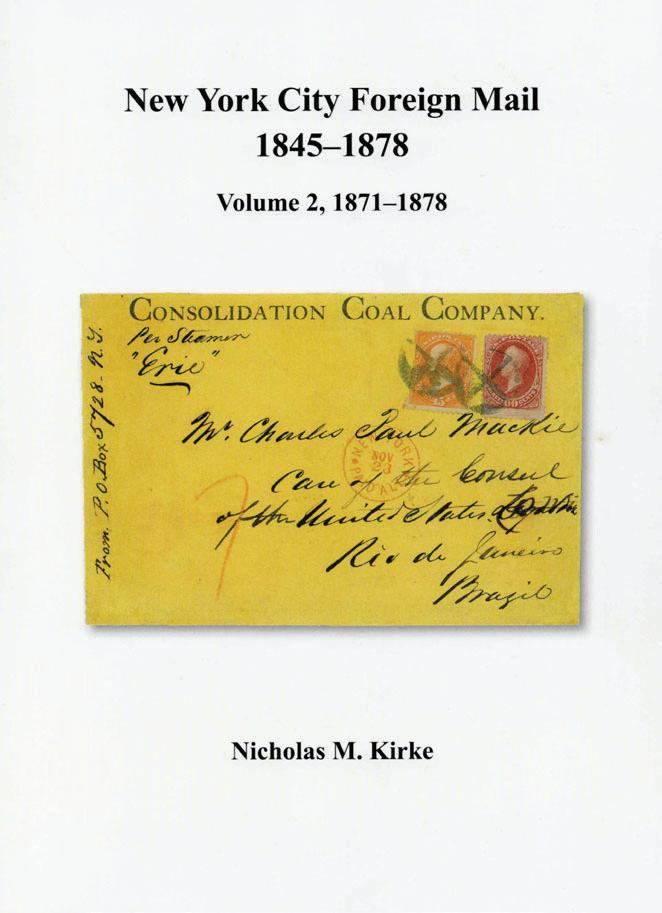















The publication package includes the 2 volumes plus a pocket-sized
Pick up the 2 volumes and handbook for $145, or $130 for members of the Collectors Club. Join the CC, and receive a 50% discount on the price. Shipping


P
Inside Fr. Cvr. David Feldman
255 Collectors Club
204-205 Corinphila Auctions Ltd.
203 Eastern Auctions
P
210-211 Heinrich Köhler
256 Minuteman Press
Inside Back Cvr. Schuyler Rumsey
Back Cover Robert A. Seigel
Those who advertise in the Collectors Club Philatelist are supporting both our organization and the hobby in general.
If you purchase stamps or covers from these fine companies, please let them know you saw their ad in the CCP.
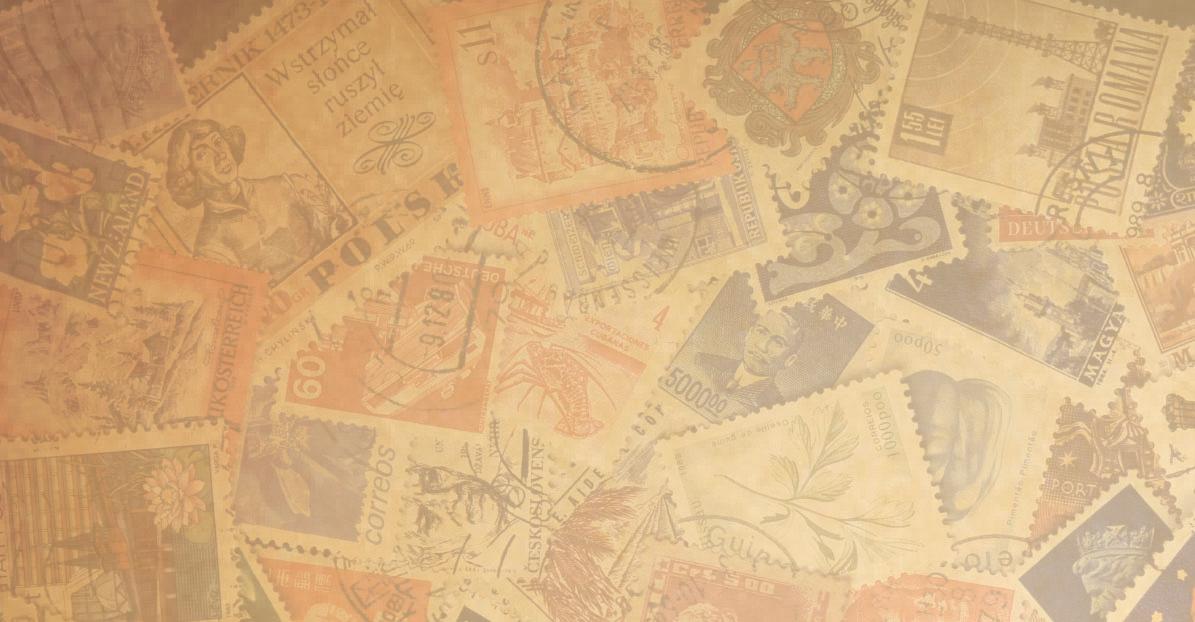

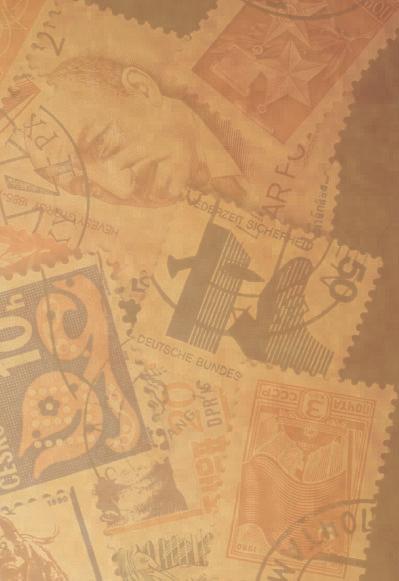




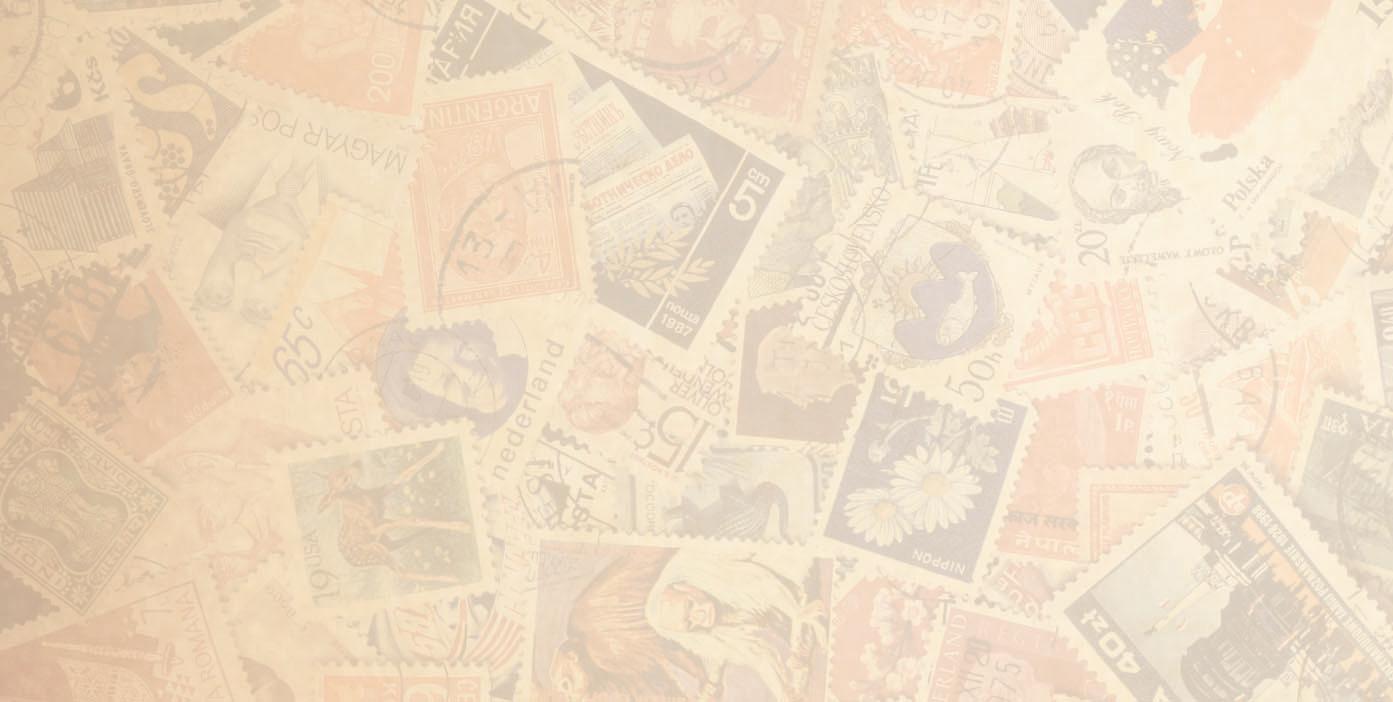

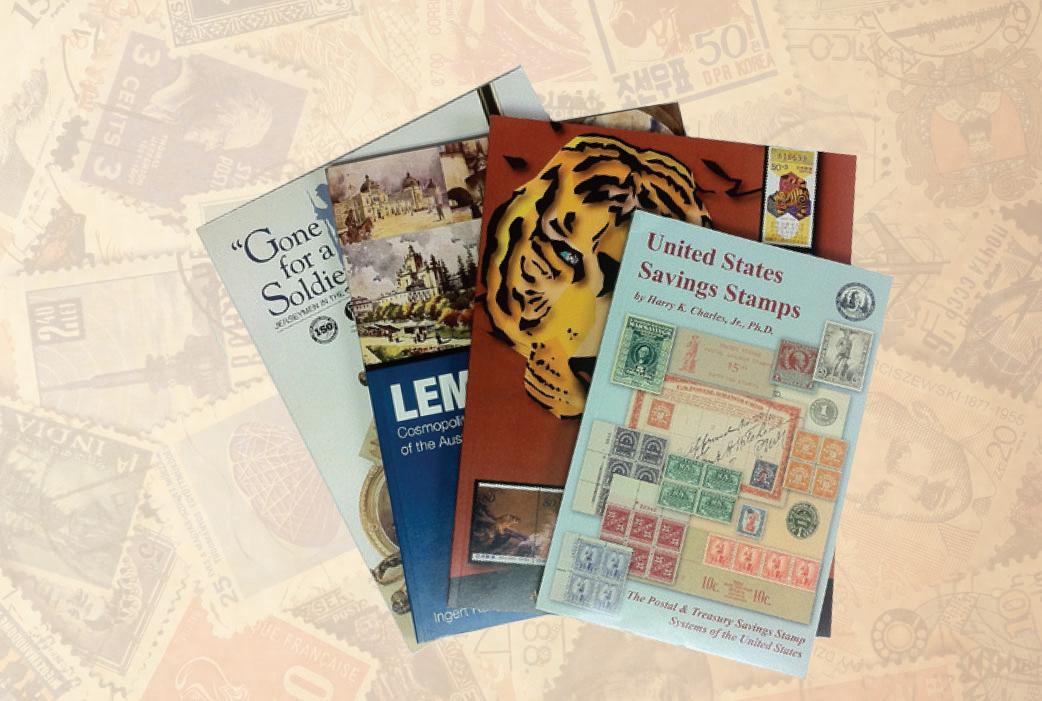
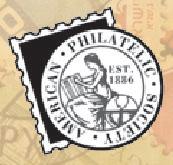



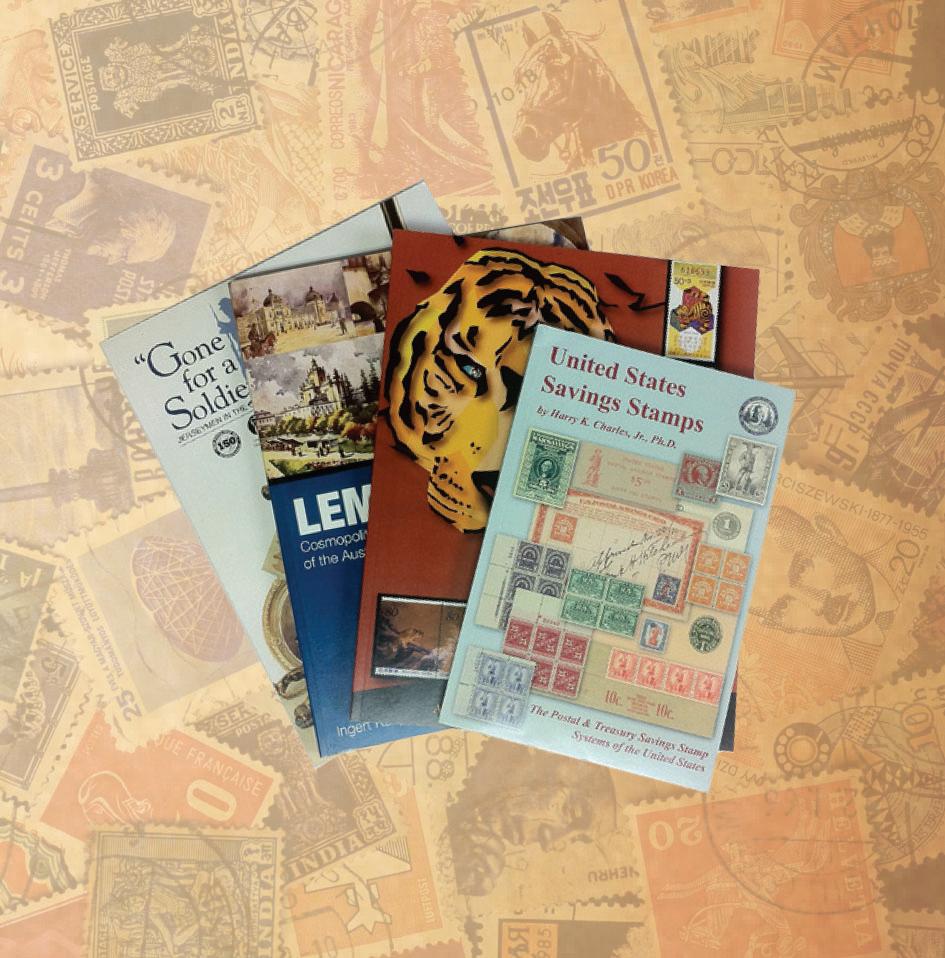

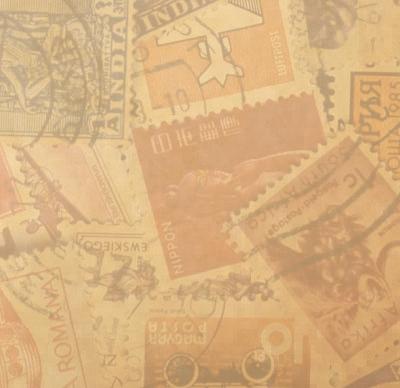

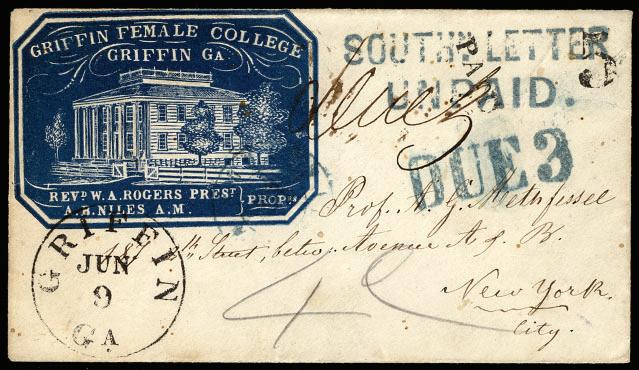
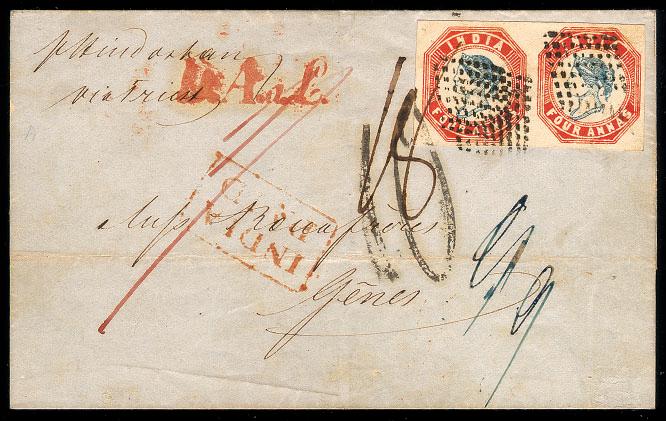
When
choosing an auction house, you should also consider the things they don't sell.
Knowledge. Experience. Integrity. Things that cannot be bought, bartered or sold. Yet they’re responsible for realizing the highest prices for your stamps. At Rumsey Auctions, we’ve built our reputation on these qualities as much as on the impressive financial results we achieve for our clients. Please call or email us and let us show you how much we can do for you.
